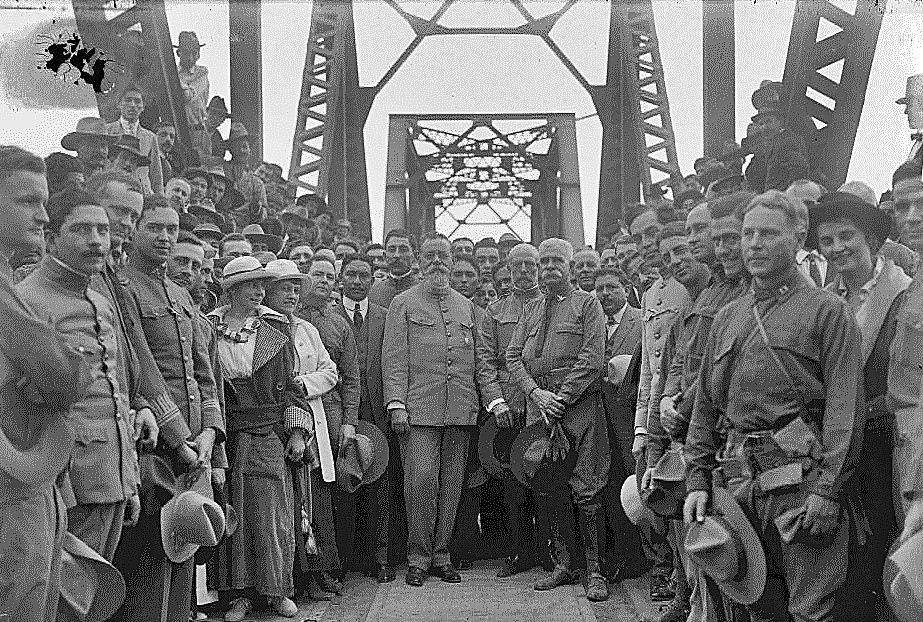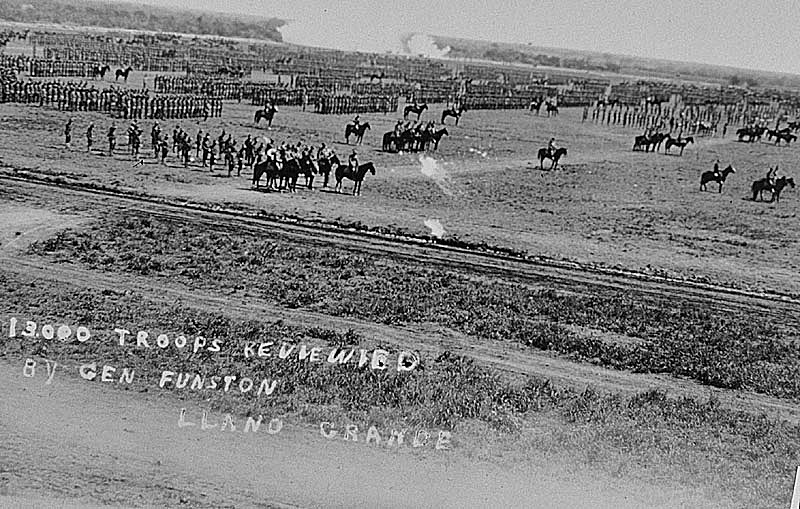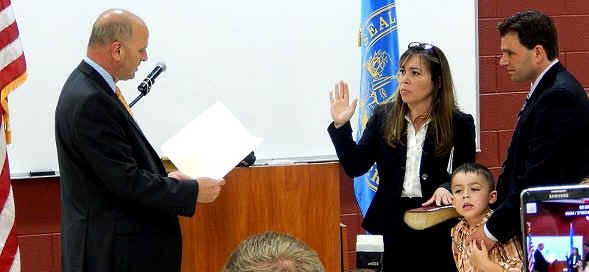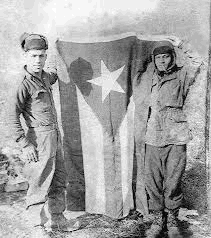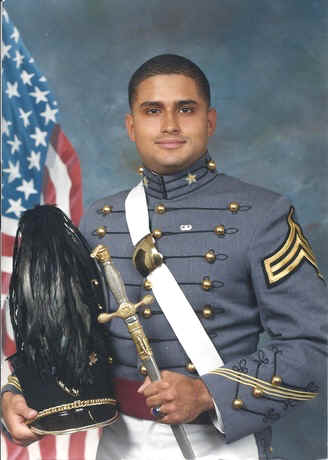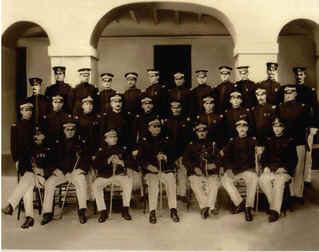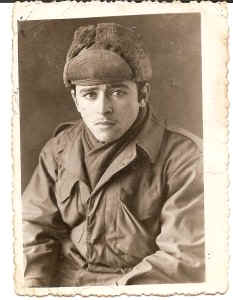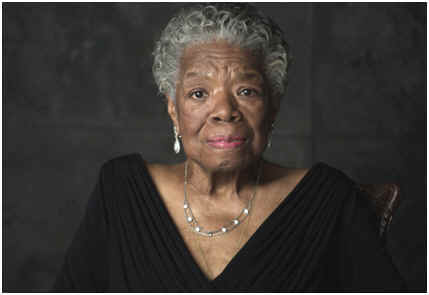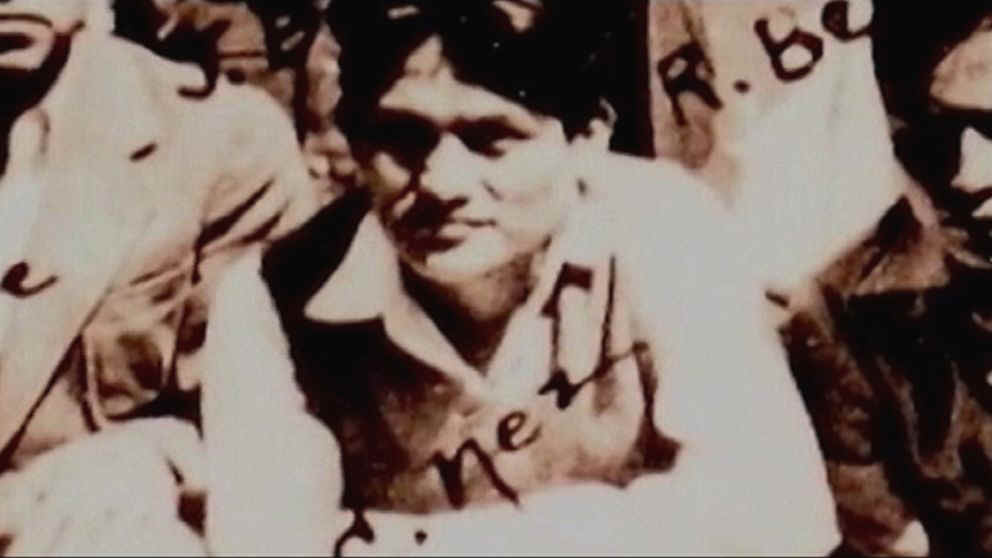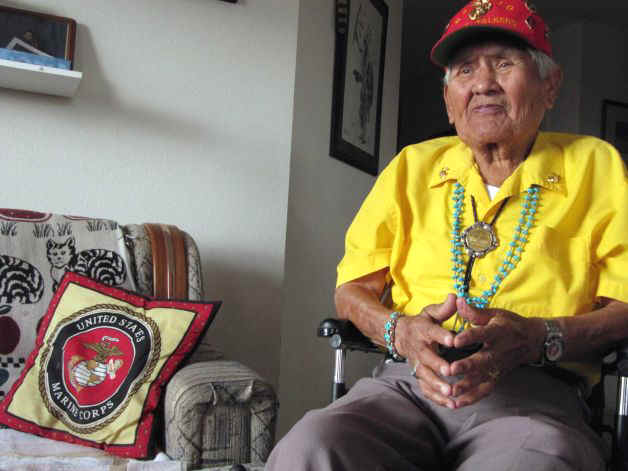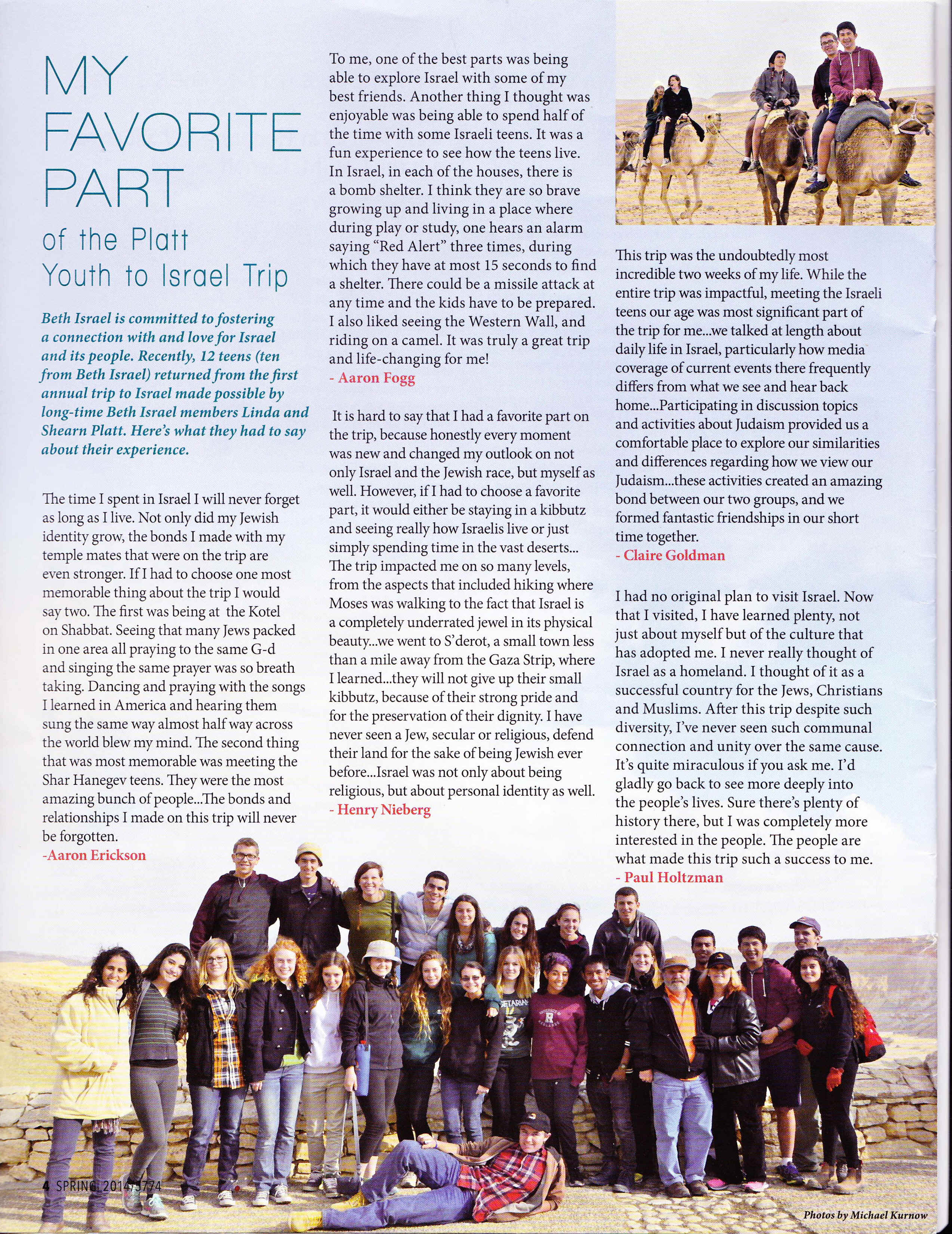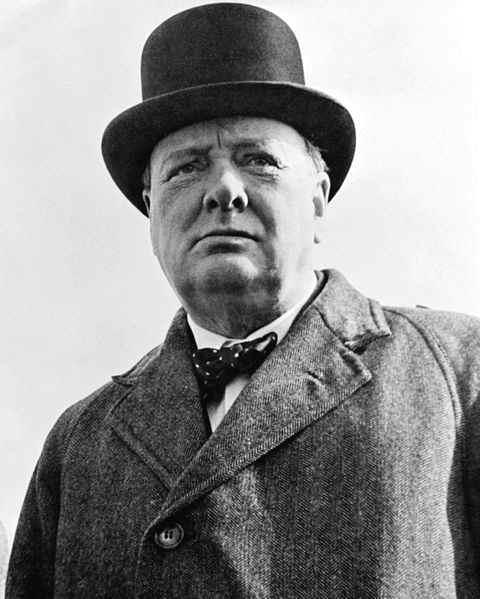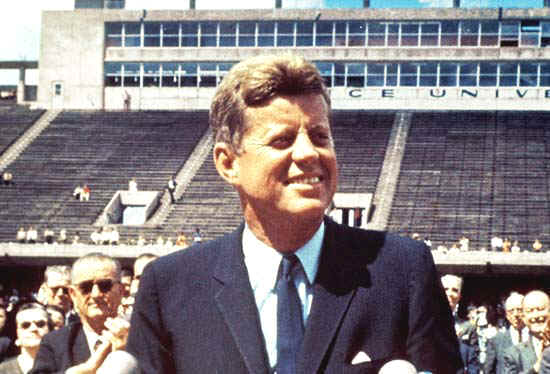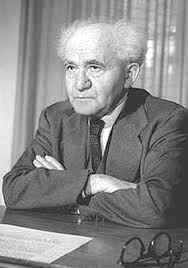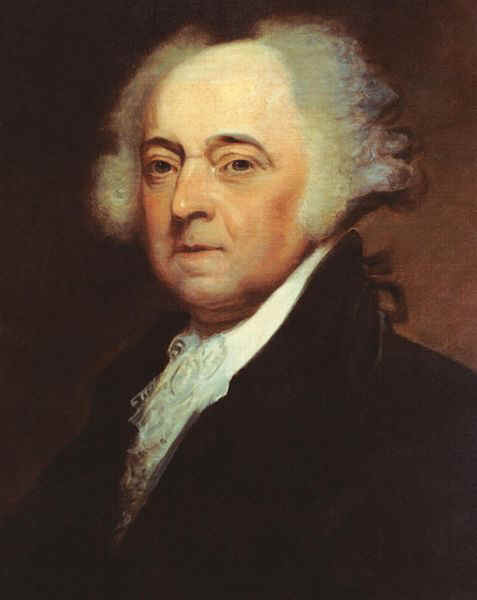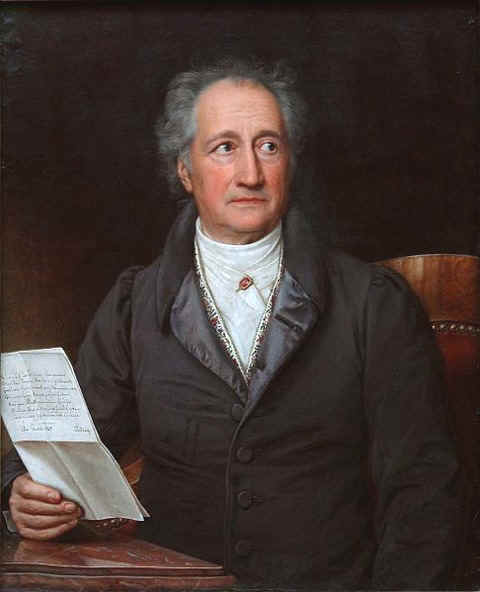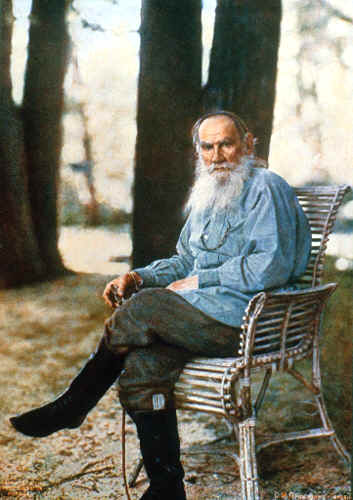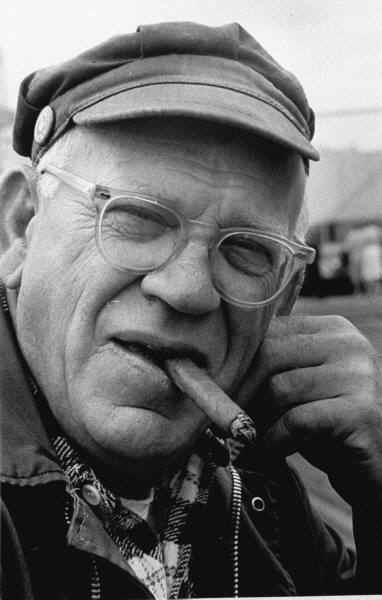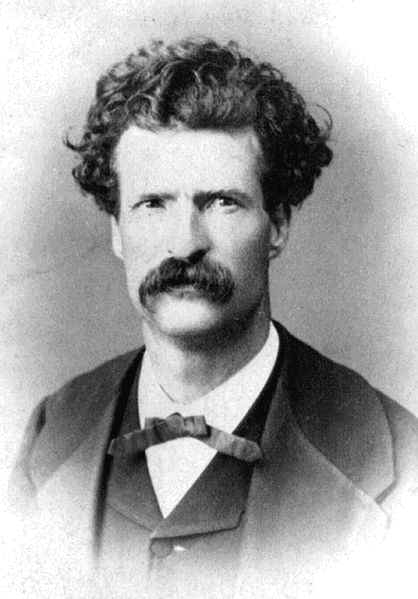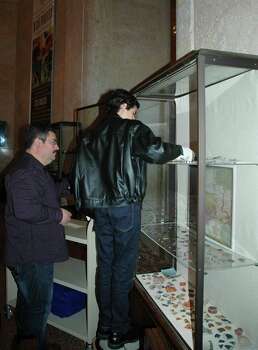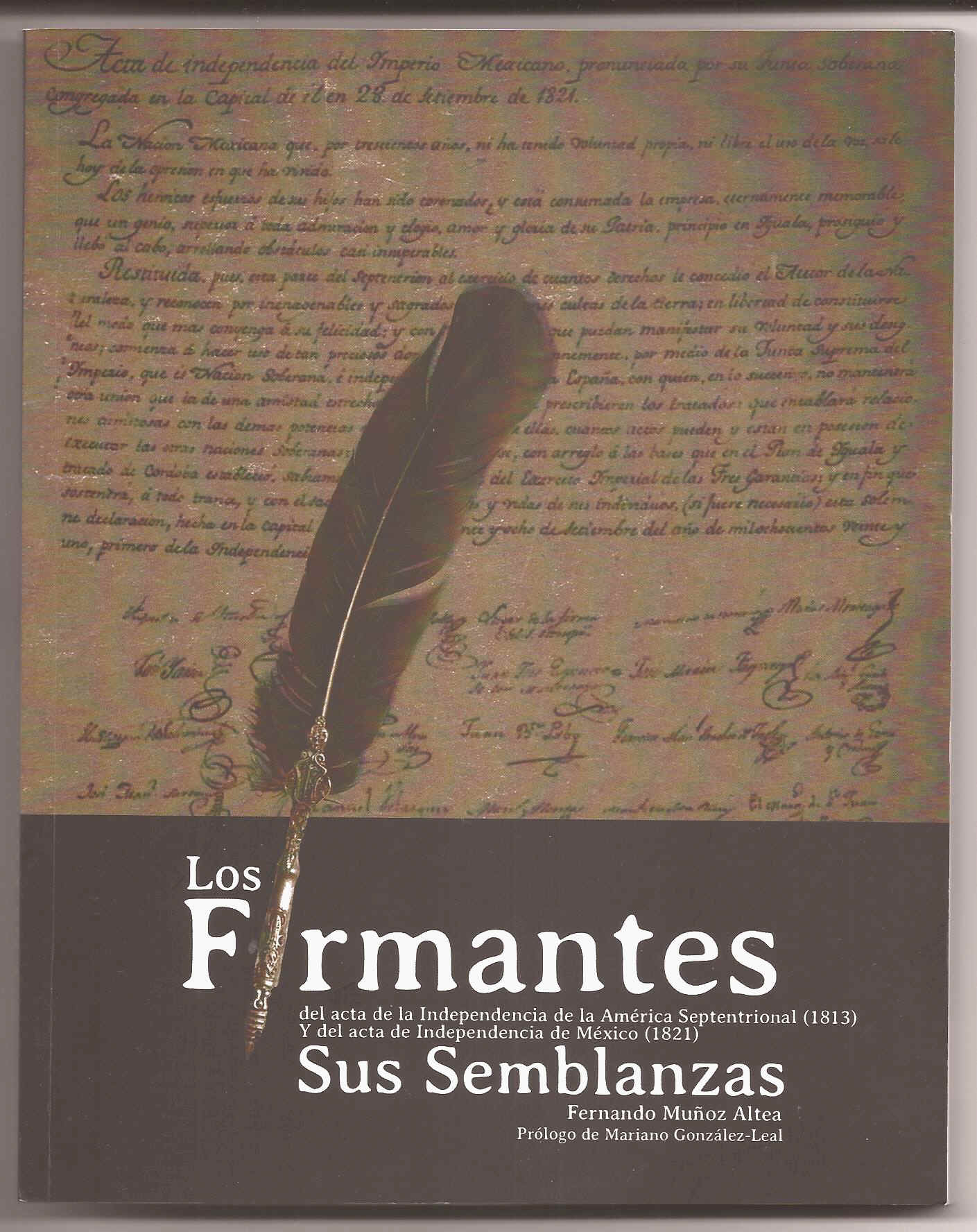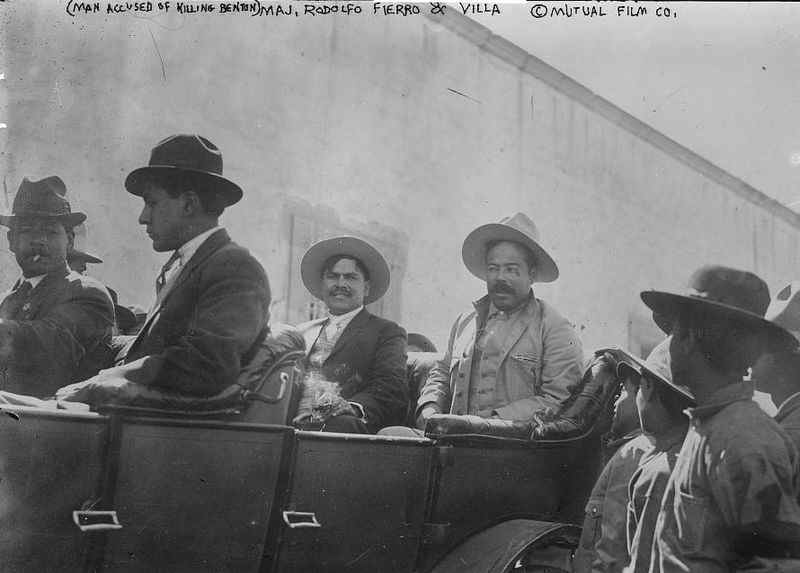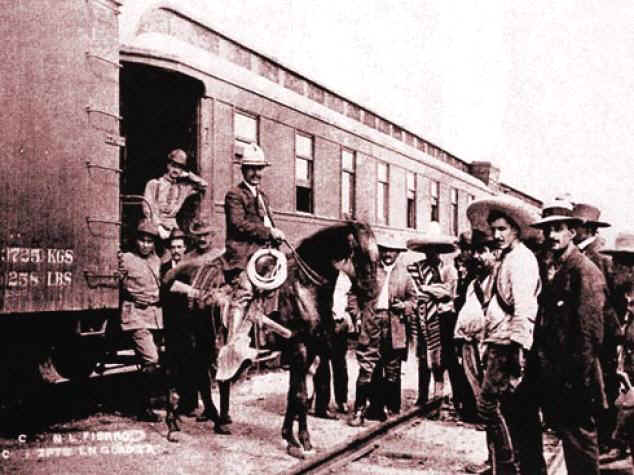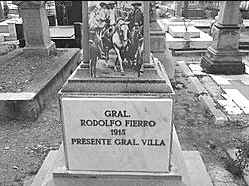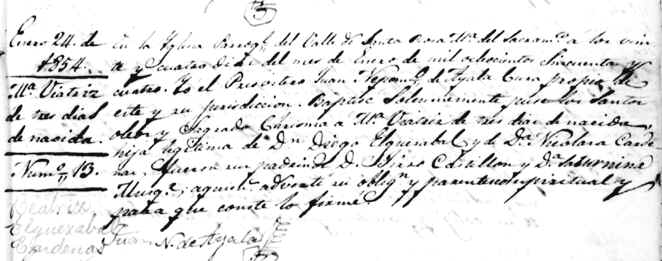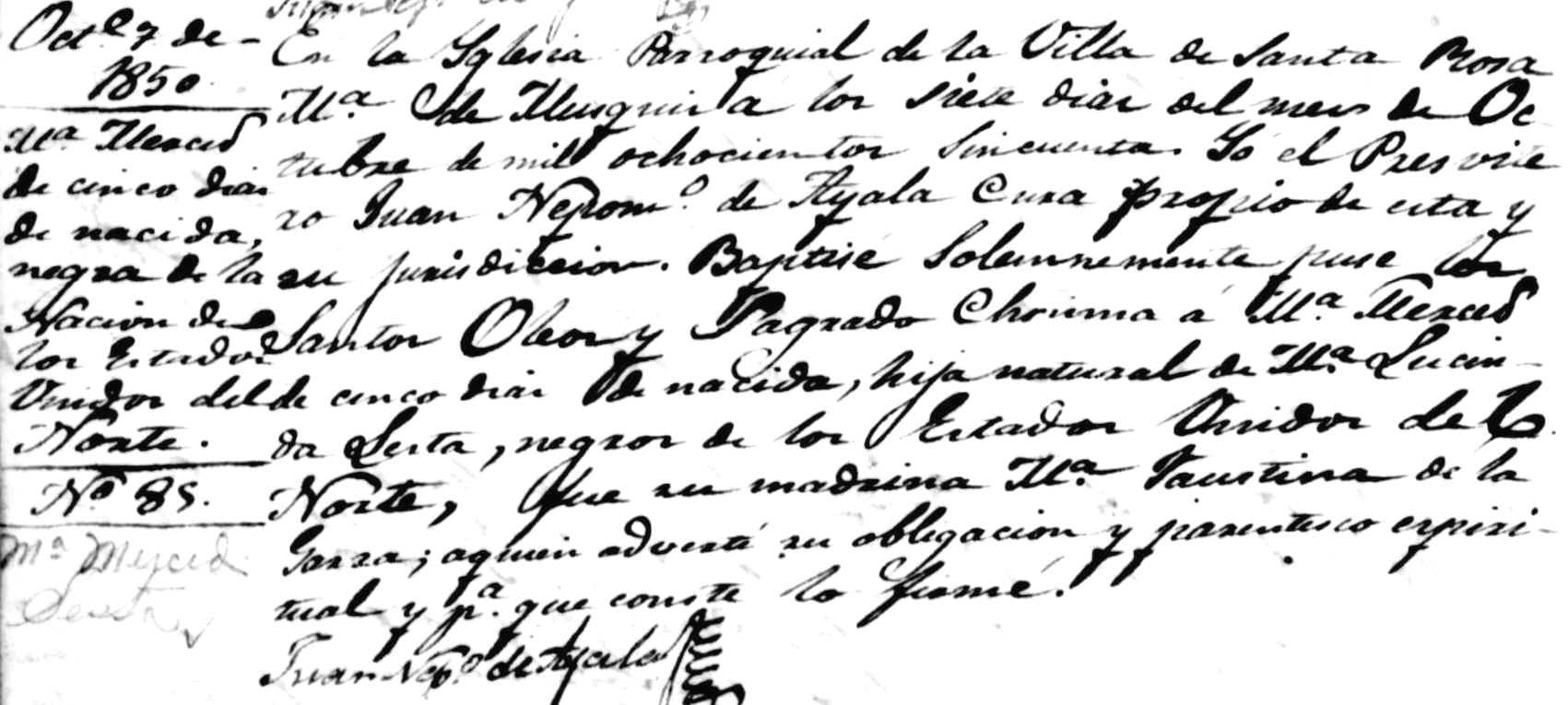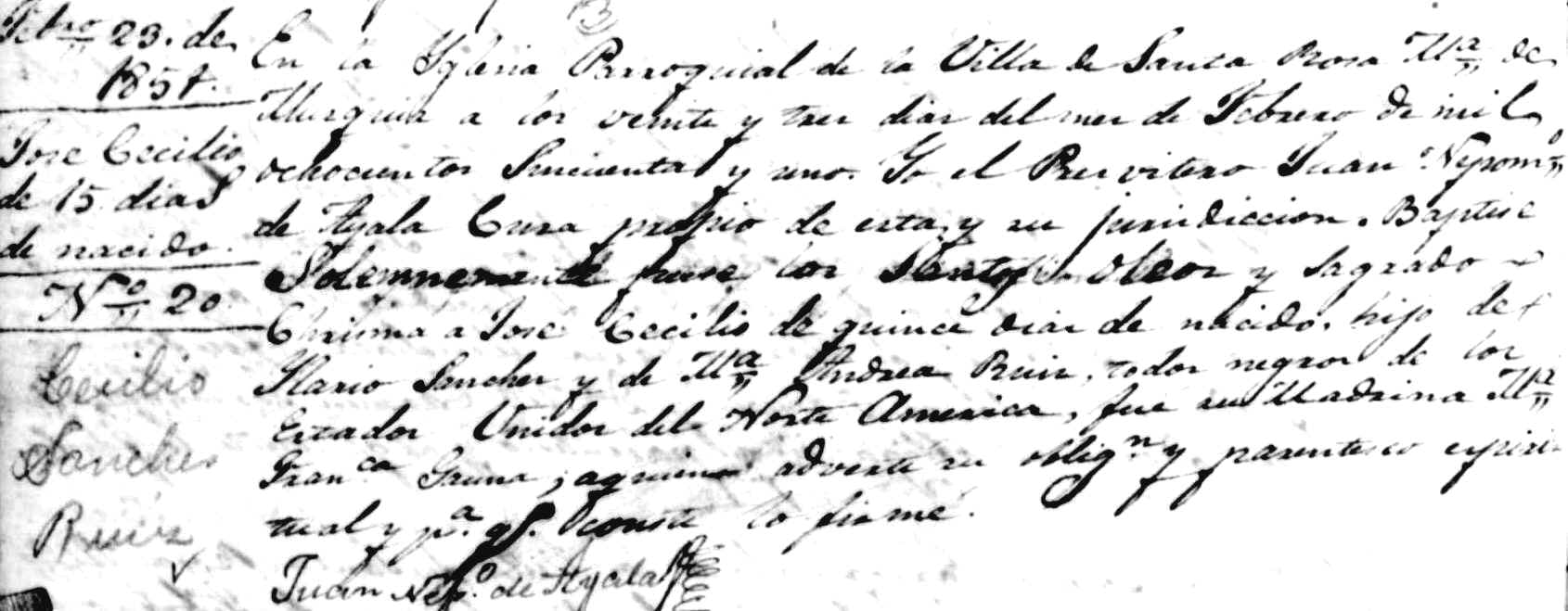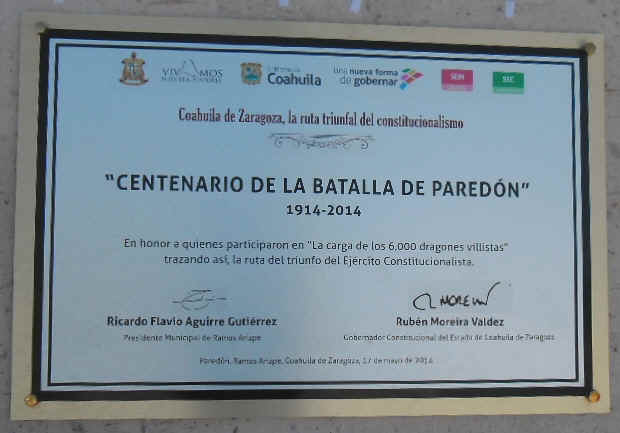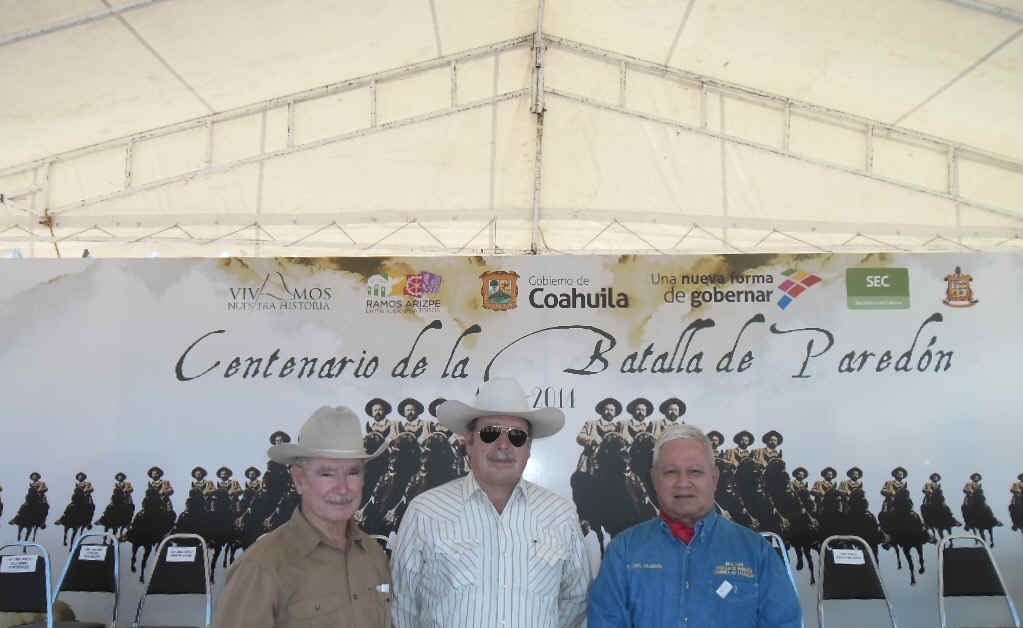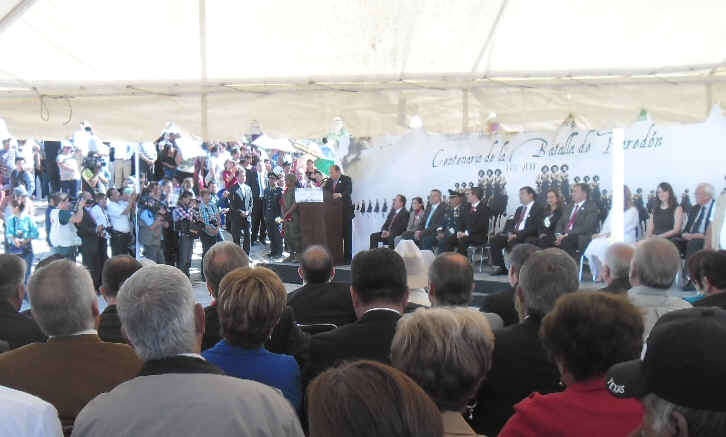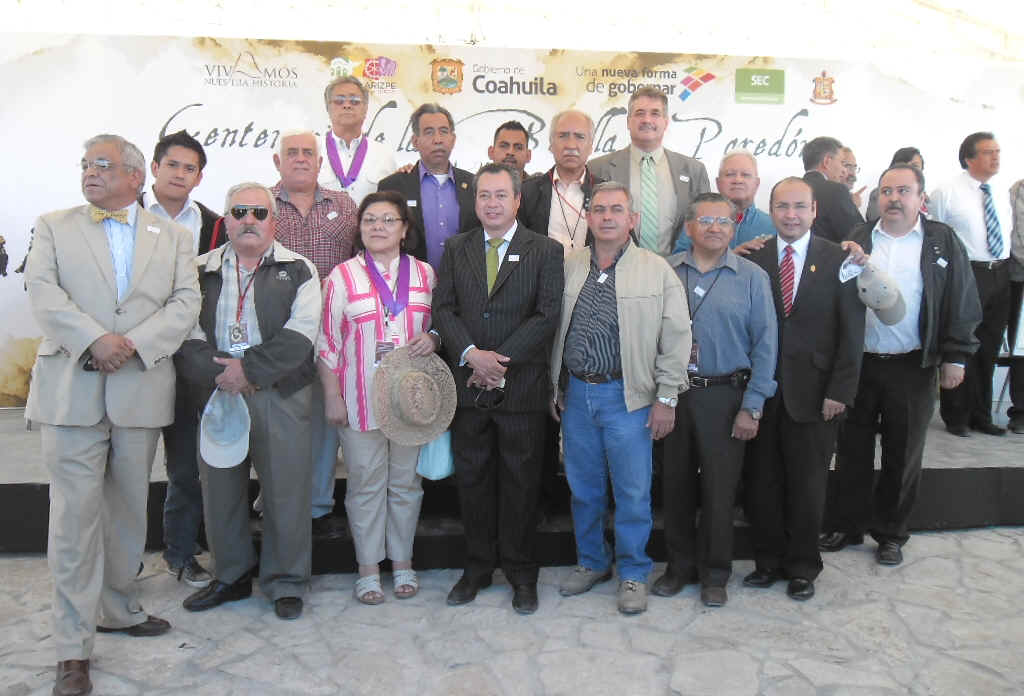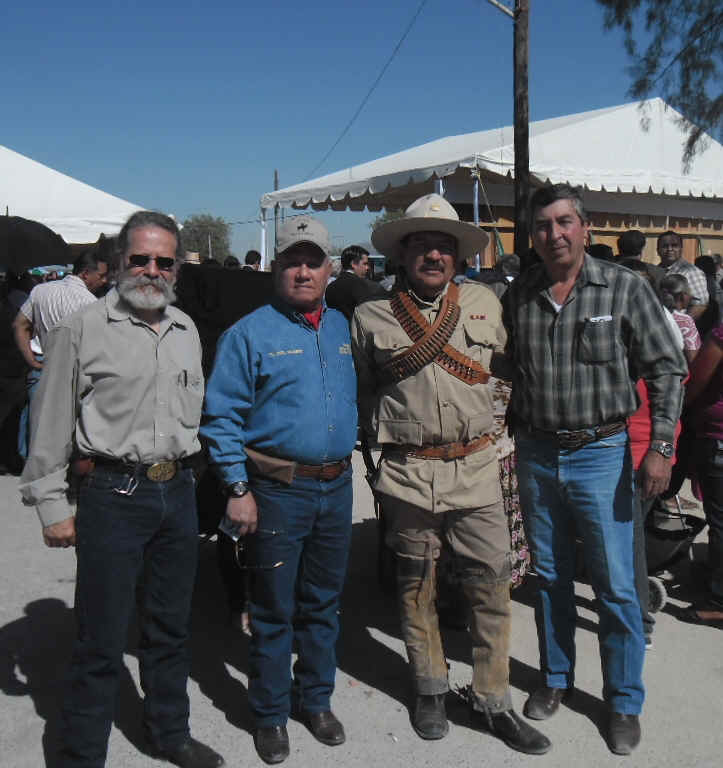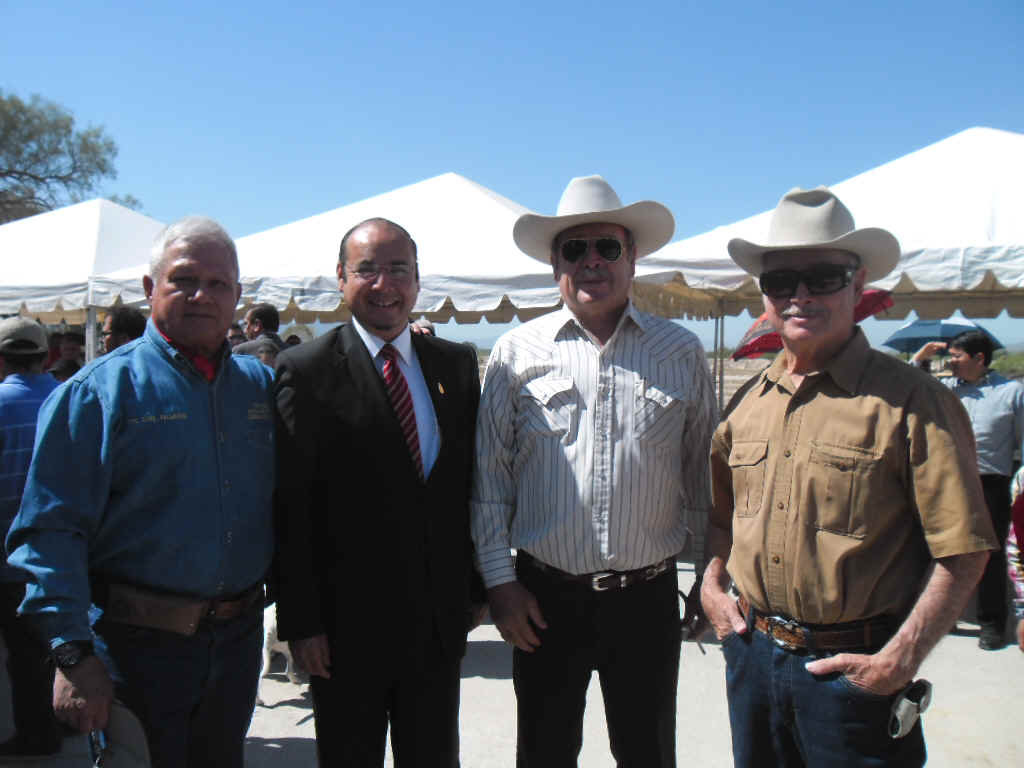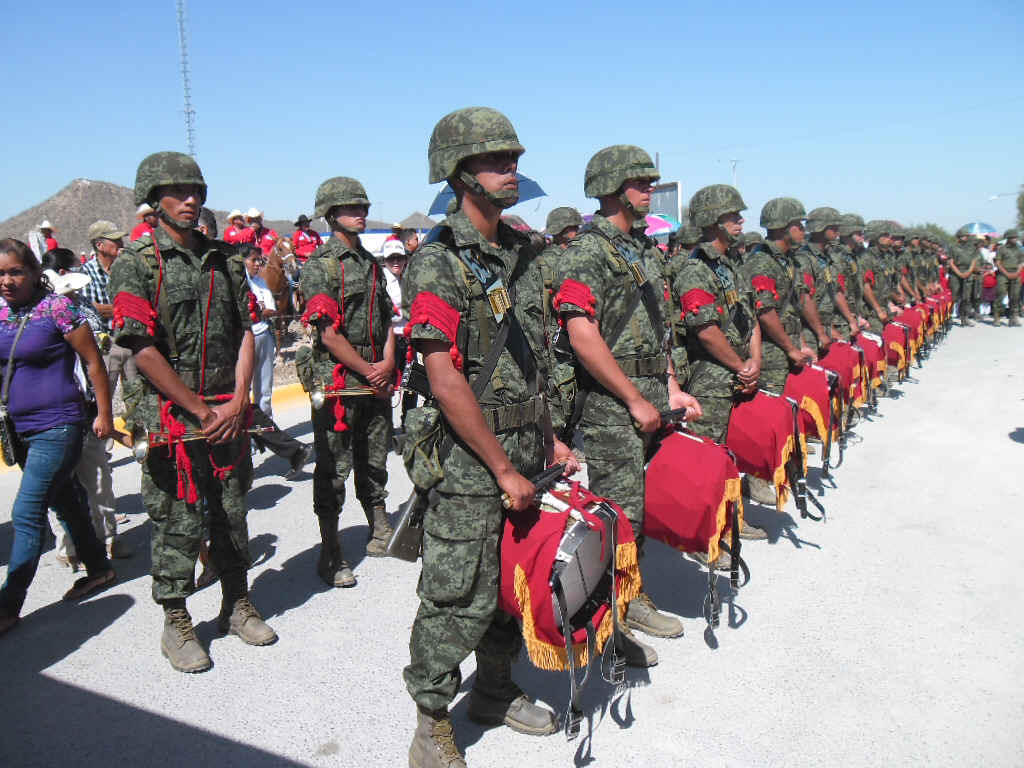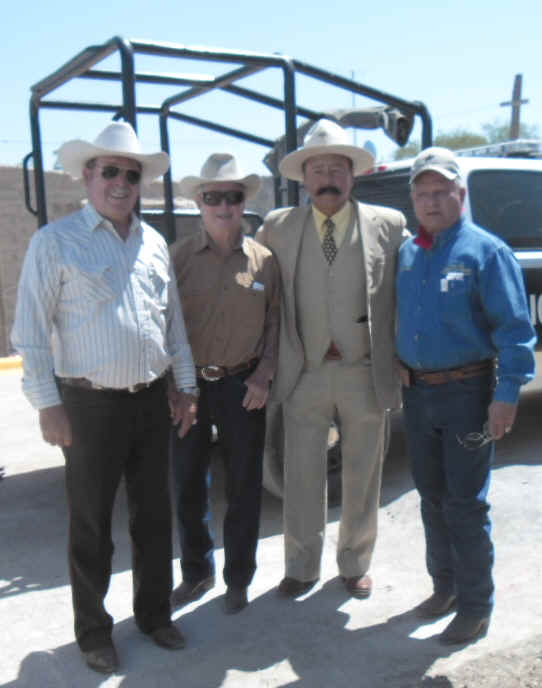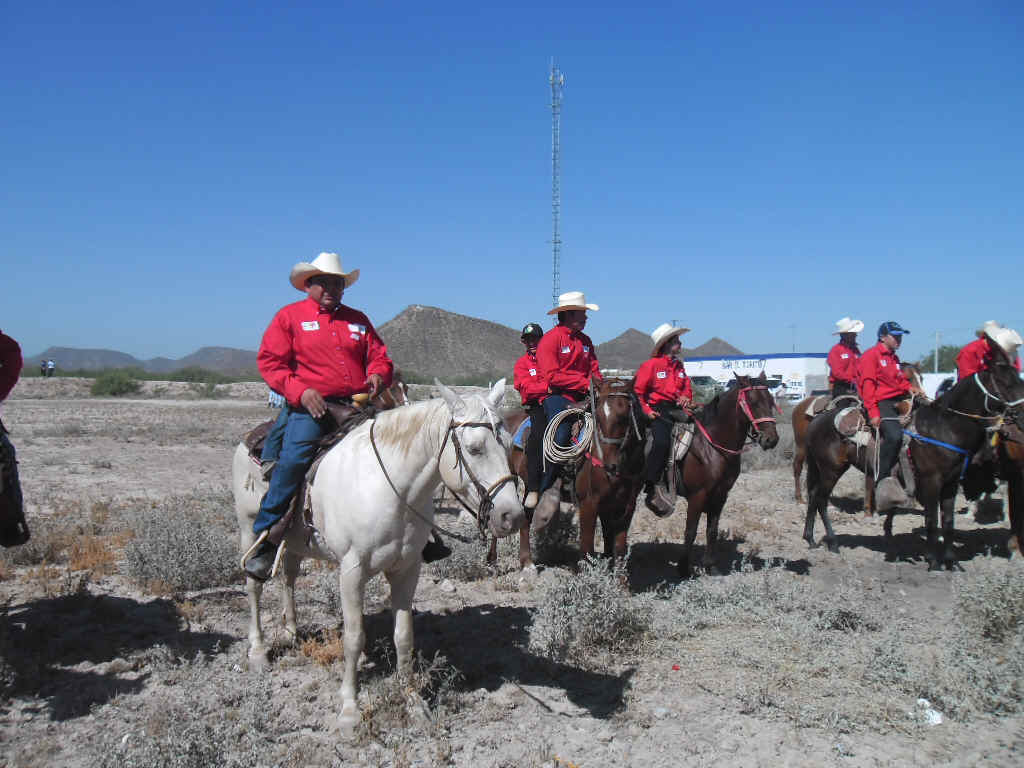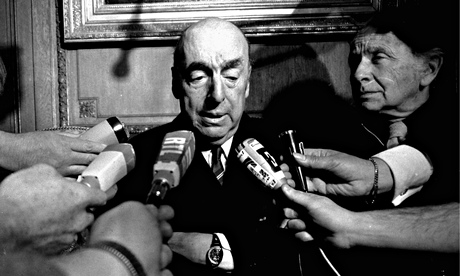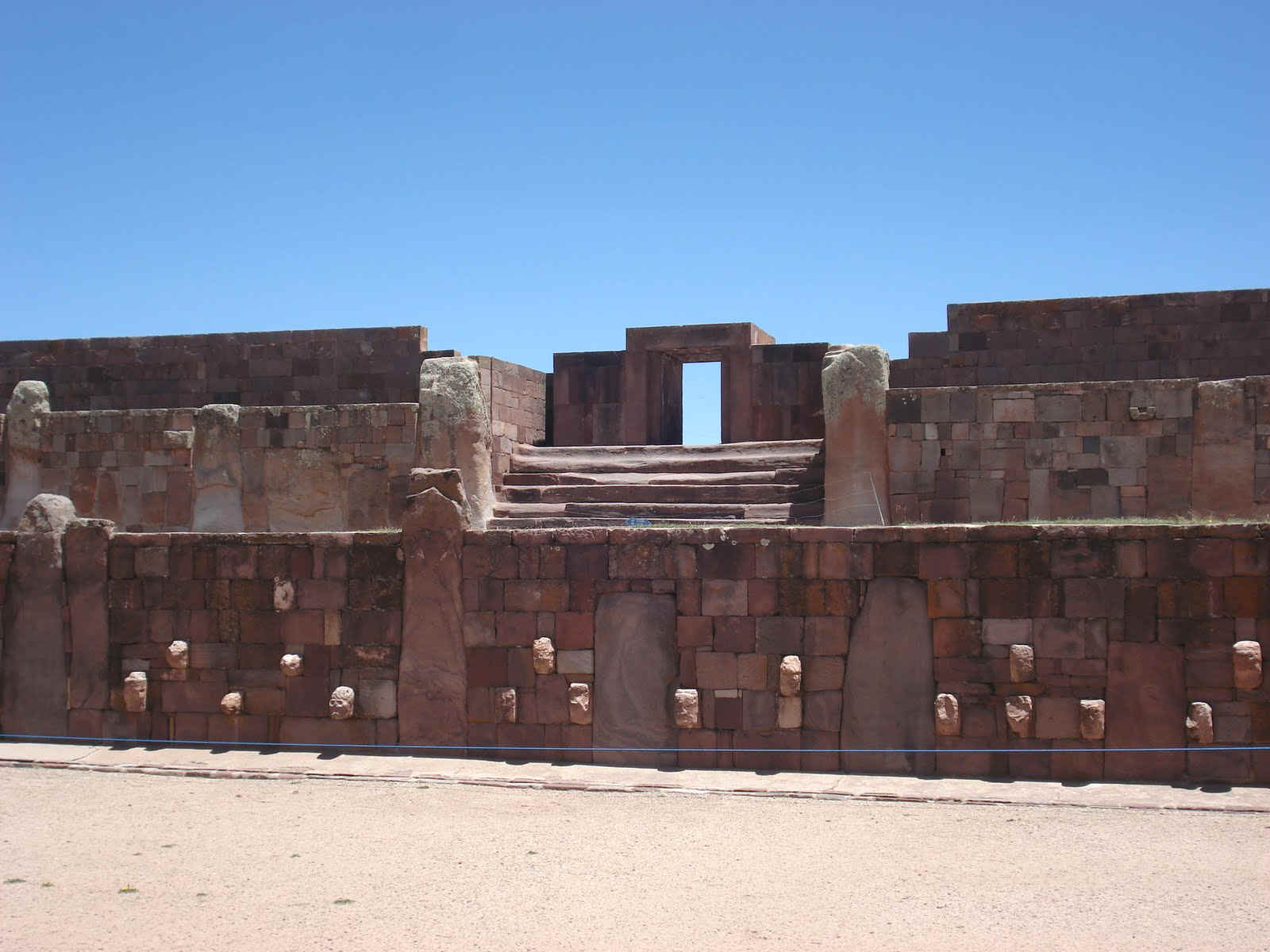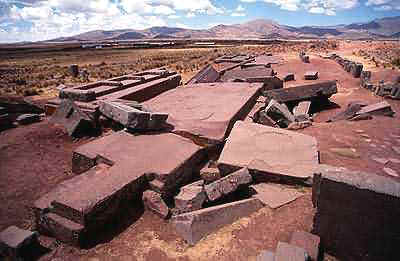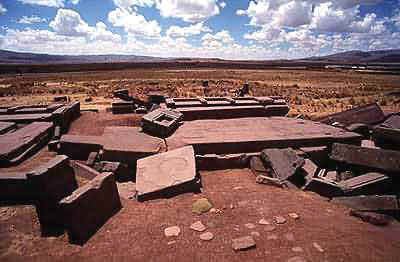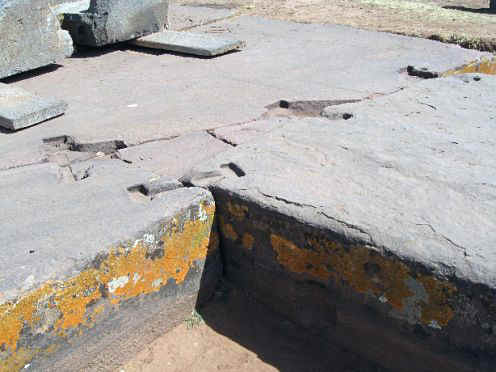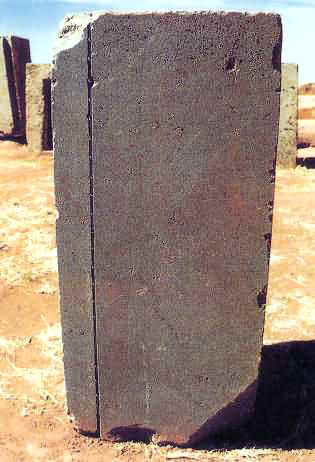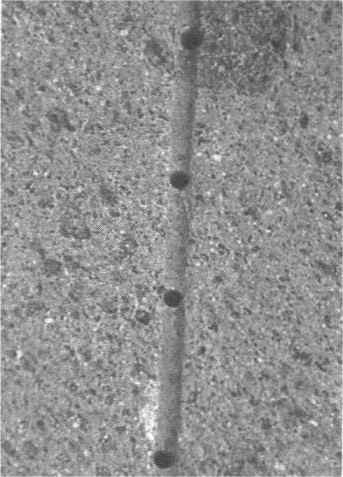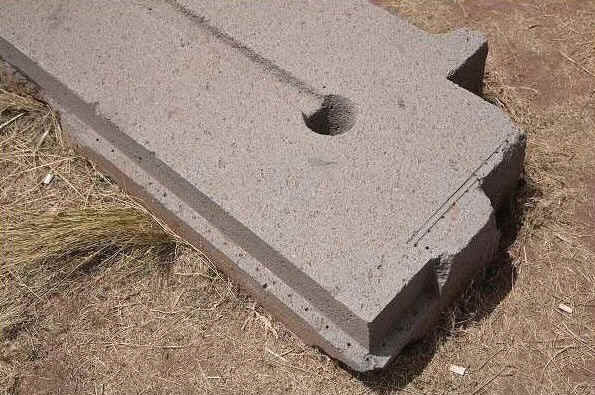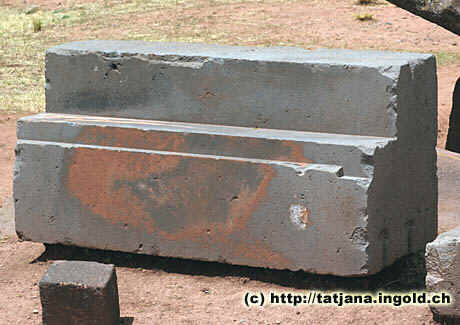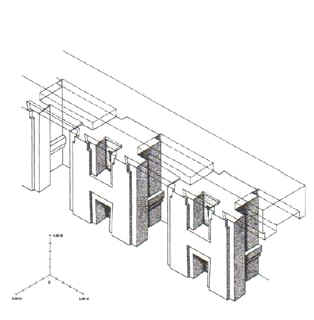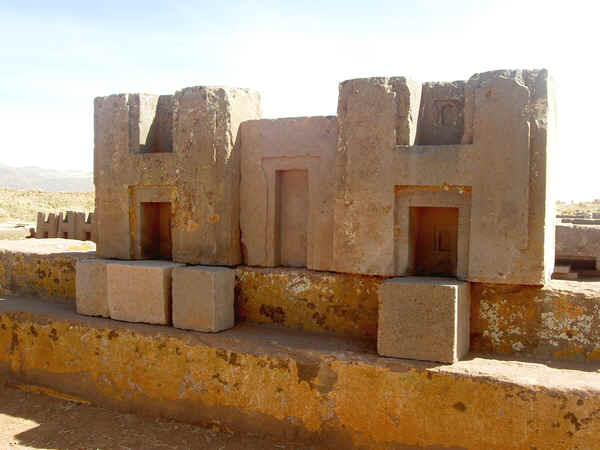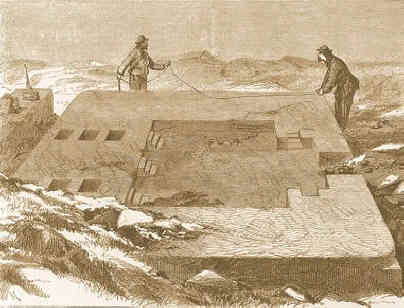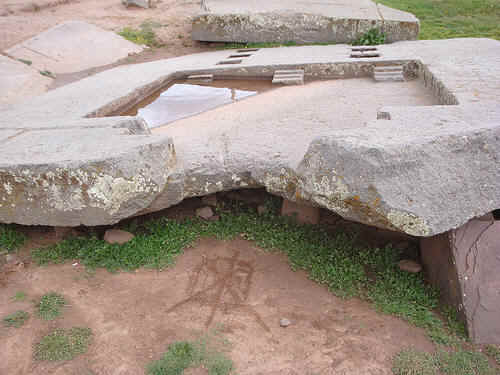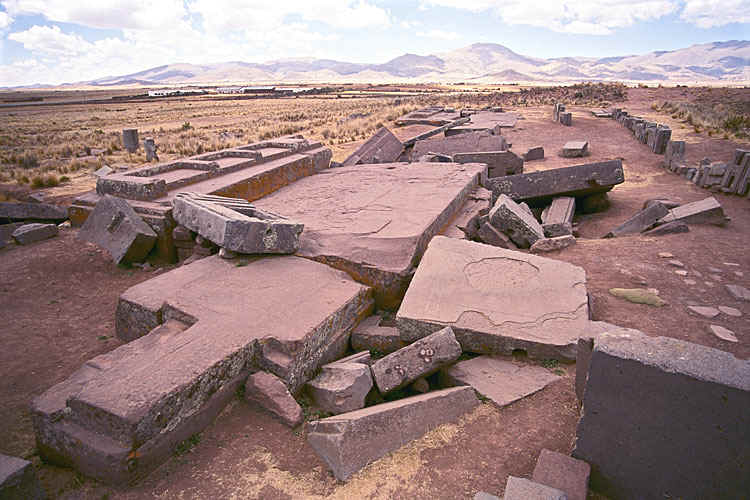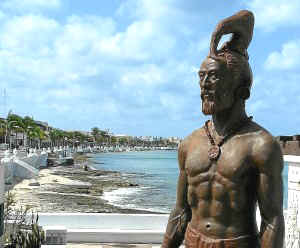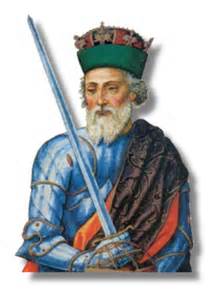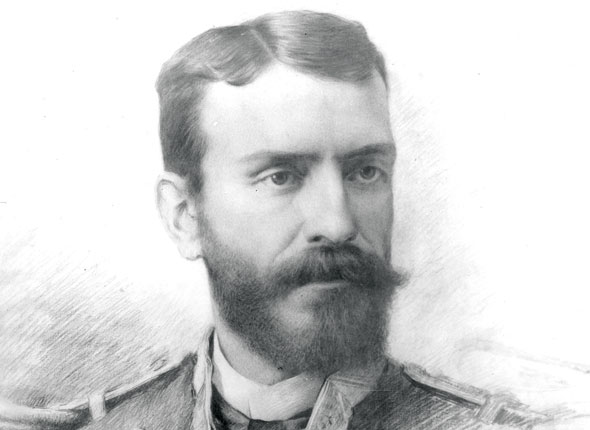|
Introduction. As
I explained in my previous articles (Parts 1, 2, and 3), many good and
rough things happened to me and my family during my 35-years of work, as
Foreign Services Officer (FSO), with the U.S. Agency for International
Development (USAID), as a Director of a Health Project in Guatemala, an
International Consultant with private contractors, and as a contractor
with the Organization of American States (OAS).
Although at times there were extremely harsh experiences, this
was a most productive period of our lives.
As an Organization, USAID is exceptional; some Offices within it
were, at the time (20 years back), in need of better selection of
managers. In any event, it
was a time when my family and I were assigned – and lived – in eight
different countries. I lived
in three countries by myself. And,
I went on Temporary Duty Assignments (TDY) to 26 other countries.
For this reason, I would like to tell some of my
many professional and personal stories in a series of installments over
a period of months. For
professional reasons, I will try to stay away from the highly technical
side of my work – although citing some examples and parts of my
experiences.
Part 4. This is the fourth part in my series of
stories. These few stories
took place during my first three months of my tour of duty in the
Regional Inspector’s Office in the Middle East.
To be more precise, when I first arrived in Karachi, Pakistan, I
was there only three days. I
was immediately sent on Temporary Duty (TDY) to Bangladesh, where I
stayed for the next 3 months.
Assignment to Pakistan.
As explained in the previous Part, an assignment to Pakistan was
the equivalent of being assigned to Siberia.
No one wanted to ever volunteer to go there.
The travel factor, at 85% to 95%, was awful.
The countries that were then covered were the most backwards.
Moreover, two “memorable” and “difficult” guys were in
charge of the regional office – Jack R. and John E.
Jack R. had a very nice wife and no other family in
Pakistan. She was tall,
brunette, friendly, a very pretty face, and a nice figure.
Jack was a tall person, maybe in his 50’s.
However, he had a very serious alcohol problem.
He would come into the office, in the mornings, grab a coke from
the refrigerator, lock his office door, and by ten o’clock, his face
would be red as a beet, and he was zonked.
He was one of those “mean drunks.”
To talk to him, you would have to knock on his door and carrying
a conversation with him was a challenge.
His efforts to intimidate you were evident.
Perhaps, it might have been that he did not have the best of
technical capabilities. In
any event, one would feel very uncomfortable with him.
Given my “docile personality,” he and I “tangled” a
couple of times; so, I avoided him as much as I could.
Our technical briefings and conversations were normally with his
deputy (John E). After I
left Pakistan, Jack R. was transferred to Panama.
With his mean disposition, he quickly experienced all kinds of
trouble with the staff. At
times, he pursued members of his staff and tried to get them fired.
People in his staff banded together, conducted a “covert
strike,” and confronted him until he backed down.
As in Pakistan, morale problems, in Panama, became extremely low.
Jack R. eventually opted to or was asked to retire. I heard later that,
within a couple of years, he died of alcoholic damages to the body.
May he Rest in Peace.
When Jack R. left Panama, he left a very negative
working environment. For
instance, one person (Marc B) got so relied up that he
“disrespected” a top notch and nice supervisor (Dean H.).
I knew Marc B well because he had worked for me in Colombia.
By nature, Marc was a strong and temperamental person.
He had been a boxer, an actor, a painter, and a weight lifter.
Although Marc B would later say that his show of anger was just
“an act,” I was told that he flipped a heavy desk to demonstrate his
temper. Soon after
this incident, the Panama Office was once again shut down and
transferred to Washington D.C
·
When the Panama Office was moved to Washington D. C., Dean H –
a real fine person and a fine manager, who had been the Deputy in Panama
-- was appointed as the Regional Inspector General for all of Latin
America (RIG/LA). And, I,
who was then a functional Deputy Regional Inspector General for Egypt,
was transferred as the Deputy RIG/LA to establish a peaceful environment
in the office. This is a
separate story that will come later on.
Getting back to Pakistan, the Deputy in Pakistan
was John E. John E had a
very wealthy wife and they had no other family in Pakistan.
John’s wife was an exceptional stock market analyst, invested
in only six stocks, had timing on those six stocks down to a science,
waited for the stocks to hit low, bought, and got out when stocks hit
high. Whenever, she went to
New York, members of the Stock Market would fully host her stay.
She developed Cancer and died a few years later.
But, John E. was very different.
He had an excellent technical background, but was a very negative
person. He would be agreeing
with you and, at the same time, he would be shaking his head in a
negative manner. He
frequently acted as Monday Quarterback and arguing with him almost
always became heated. He was
a hard task master. In
sum, those two Office Managers were extremely rough.
Once I was transferred to Egypt, I never again knew what happened
to John E.
However, to be fair, this RIG/Middle East had many
backward and difficult countries to cover, the travel factor was 85% to
95%, and some of the 10 people on the staff had long before reached
their highest level of capabilities.
Thus, this was to be another of my assignment to “Siberia”
for complaining to the Auditor General against his assignments,
education policies, and a lack of a career ladder.
Tour in Pakistan. Within
two months of my talk with Gene (the EXO in Washington), I had packed
only my air freight items, bought and shipped an old Chevrolet Vega,
and, I was on my way, in Pan Am Airways, to Karachi, Pakistan – all
alone.
Arriving in Karachi with a carry-on bag, I found
that Pan Am had lost my two bags. I
was greeted at the airport by Gino P, a very jovial Italian friend of
mine, and his wife. Gino and his wife were past-middle age and he loved
to smoke and chump on cigars. His
garrulous manner and funny contagious laughter were well known.
He was a great friend, died a few years later, and is sorely
missed. Anyway, he was,
aside from the two Chiefs, the only person in the office at the time.
His greeting to me was “Joe, you came alone, huh!
What do you want me to fix you with:
a little boy or a female lamb…” and then burst out laughing.
It was a reference that all countries covered by the Office were
very conservative Islamic; thus, getting a girlfriend would be next to
impossible and I was going to lead a very lonely and caste life -- which
I did.
They put me up in a huge beautiful house, where I
left my carry-on bag, and went to the office.
The greetings by Jack R and John E were quick and to the point.
“Glad you are here. We
have a lot of work where you can help…we have received a bunch of
allegations that family planning commodities (condoms, oral pills, and
others) are being diverted, converted into other things, and sold in
Bangladesh, Pakistan, and India...we need to find out where this is
happening, what commodities are being converted, and what is going
on….get ready because you are traveling to Bangladesh, on your first
job, two days from today. Give us your passport so we can get you a Visa
and the air tickets.”
Since Pan Am Airways could not find my bags, it
gave me $100 (or thereabouts) to buy some clothing.
Buying clothing in Karachi is not as easy as going to a shopping
mall in the U.S. Gene
P loaned me a bag, I bought some mismatch of shirts, trousers, and
underwear and I was on my way to Bangladesh on the third day – as
planned. (Note:
Pan Am eventually found my bags, made efforts to return them back
to Virginia, and finally delivered them to Karachi.
I was not to see my two bags until I returned from Bangladesh
close to 3.0 months later.)
My assignment to Bangladesh was urgently needed
because there had been a series of allegations, rumors, and other
classified information relating to Family Planning commodities and
services (condoms, pills, sterilizations, etc.) being diverted between
countries and/or converted into different forms of commercial
properties. My
assignment was to determine which commodities, what countries, and what
new commercial forms were taking place.
Although I will not get into the real technical aspects or
specific conclusions of my work, this article tells some of the things
that happened to me in Bangladesh.
The Memorable Beggar.
In 1977, Bangladesh was quite a backward country; Dhaka, its
Capital, only had two half-decent hotels.
So, I stayed in one (maybe The Parbani Hotel).
It was not the best; but, for me, it was adequate.
In fact, I was to stay in worse hotels, in Bangladesh and other
countries, later on. Anyway,
I had brought a bottle of Johnny Walker with me “(just in case a Cobra
bit me).[ii] All alone in
the hotel the afternoon I got in, I got a little ice, unpurified water
– which later on gave me a gift of amoebae’s
-- and had a few
drinks.
Night was coming fast.
So, before it got too dark, I decided to walk around the center
of Dhaka and then eat. As I
walked outside the hotel, looked at the little shops that were now
closing, and milled with the huge multitude of people, I got tapped on
the shoulder a couple of times.
As I turned around, I faced the most frightening
sight that I had ever seen. It
was obviously a man. However,
he had no face, his nose was destroyed, his bare eyes stared at me, and
the fingers of his hands and feet were nothing but stumps.
If you have seen Michael Jackson’s “Thriller,” you will
remember the scene where people, in thorn clothing and zombie-like
appearances, are coming out of the graves.
This will give you a good idea of what I was seeing in front of
me. It was a beggar, in
tattered clothing, who wanted me to give him money.
And, for the first time in my life, I was staring at the face of
a human being in the last stages of leprosy.
Pieces of skin seem stuck in places where his face and hands had
been. I had never
expected to see anything like that.
Needless to say, the sight terrified the daylights out of me.
Talk about hallucinating, my mind began to work overtime.
I began to search my memory on whether I had taken a drink too
many. Boy, I sobered up
fast. Scared stiff, I got
some money, gingerly passed it to him, without touching him, and hurried
back to the hotel. I was to
see this beggar and other similarly deformed people affected by leprosy
many times after that. Knowing
I was an easy target, they would wait and follow me until they got my
donation. I was terrified
each time, but felt great compassion for them.
Even today – close to 40 years later -- I still see those
faceless beggars in my mind. Sometimes
I have nightmares where I walk among the most deprived or there are
visions of the total isolation that those poor souls probably live in.
Leprosy is a horrible illness.
However, we now know a few more things that I did not know then.
The disease, also known as Hansen’s disease, is caused by
bacteria called Mycobacterium Leprae.
For some reason, this disease has a very high incidence of
occurrence in such countries like India, Brazil, Myanmar (Burma), Nepal,
Tanzania, Mozambique, others). Leprosy
in Bangladesh has fluctuated from 11,500 in the Year 1996, to 14,500 in
Year 1999, and 10,000 in Year 2003.
According to scientific writings and the World Health
Organization, it is, in most cases, easily curable – when diagnosed
early -- and there is a definite decline in the world-wide rate of
infections – from 753,262 in Year 2001 to 296,499 in the Year 2005.
Let’s hope that Leprosy can be completely eradicated from this
earth.[iii]
The Bengali President’s Visit.
Although I soon found friends – that I had met in Vietnam --
who would invite me to their home for a drink or a meal, the days that
followed were intense with activity at the U.S. Embassy, the USAID
Offices, and a number of other related Offices.
Just trying to get a background and a feel for such a huge health
activity – and coming up with theories and approaches to the study --
was a real challenge.
However, since I was doing the job by myself, my working patterns were
as follows: Most of the time, I would work late, go back to the hotel,
at night, continue to review more material, write as I went along, have
a couple of drinks, go to a restaurant to eat, and come back, have a few
drinks, and go to sleep.
One late afternoon, when I came down the hotel
elevator, the doors opened, and I saw the lobby basically vacant with
only an extremely well-dressed high-ranking military man coming into the
hotel. As I stepped out of
the elevator, two men in uniform pointed a rifle, spoke to me in Bengali
(which I did not speak or understand), grabbed me by the arm, turned me
around, placed me against a wall, and did a body search.
Confused, bewildered, and not knowing what was going on, I
readily cooperated. One of
the Hotel Clerks came to my aid, told the Security people that I was an
“Americani.” I finally
had the senses to ask what this was all about and was told that the
President of Bangladesh (maybe Shahabuddin Ahmed) was in front of me.
I was quickly put back into the elevator, sheepishly went back up
to my room, and ate much later that night.
Security was tight because the previous President (maybe Abdur
Rahman Biswas) had been assassinated two years earlier.
Regression Analysis.
During the next few weeks, I analyzed all international
agreements, reports, documents, talked to many people, accumulated all
kinds of statistical information – population by villages, commodities
being sent there, etc -- and developed a type of statistical analysis
known as “Regression Analysis” which gave me a lead on
disproportionate commodity assignment by areas.
Regression Analysis is an exceptional tool that I used frequently
throughout my career; here is a very simplified example:
|
|
Village
|
Commodities
|
Population
|
Factor
|
Regression
|
|
|
|
|
|
|
|
|
|
A
|
1000
|
400
|
2.5
|
37.2%
|
|
|
B
|
1500
|
500
|
3.0
|
44.7%
|
|
|
C
|
2500
|
800
|
3.1
|
46.5%
|
|
|
D
|
3500
|
950
|
3.7
|
54.9%
|
|
|
E
|
6000
|
250
|
24.0
|
357.3%
|
|
|
F
|
8000
|
450
|
17.8
|
264.7%
|
|
|
Total
|
22500
|
3350
|
6.7
|
100.0%
|
As
shown, the above example includes names of the villages, number of
commodities (separate for condoms, Pills, Foam, etc) and number of
people in the village. The
Factor (commodities divided by village population) represents the number
of units per each person in the village.
The Regression Factor (each individual factor divided by the
above 6.7) identifies villages receiving disproportionate amounts of
commodities. Here are the
conclusions of the above example.
The proportion of commodities being sent to Villages A, B, C, D
are – at below 100% -- within acceptable ranges and thus can be
discarded. However,
Villages E and F -- with 357% and 265% -- represent possible problematic
proportions which deserve closer scrutiny.
This is how I identified 21 (of numerous) places
that showed a disproportionate amounts of commodities and which needed
to be personally visited.
Sterilization of Women.
USAID assigned a vehicle and a driver/translator to me.
Over the next few days, I visited all kinds of health facilities
in Dhaka and close-by villages. One
facility was carrying out a Voluntary Sterilization Program in addition
to other related family planning programs.
As in other facilities, doctors were very open with me.
At the time of my visit, there were about 10 - 12 women waiting
to be sterilized. The
doctors asked me if I was willing to see the procedure.
Since I had seen how IUD’s are positioned in Costa Rica, I said
I was game. The
sterilization of women is very different than the IUD.
The doctors made me wash my hands and arms.
I then put gloves and a sterilized doctor’s gown.
Then I saw how the laparoscopic tubal ligation procedure, i.e.,
closure of the fallopian tubes works.
The sight of the two small belly cuts, a little blood, and the
inside of the belly of two women made me somewhat woozy.
In fact, my knees became weak.
But, at least I was able to get a feel for the
sterilization process. By
doing so, seeing the clinic, looking at records, and talking to the
doctors, I could now discard this area from my overall objectives.
There was no possible way that commodities or services could be
diverted through a women’s womb. Also,
the doctors gave me a firsthand seminar on how many condoms were
defective, broke easily, and how easy it would be to turn condoms into
latex gloves and for pills to be sold in the market.
Visit to Villages.
It was time to go to the villages outside of Dhaka.
The first series of trips I took were to a number of places near
the border with India (maybe Comilla, Narayangnan, Rajshahi, Nawabgani,
Santahor). Some of these trips were done by car, rickshaw, and sampan
– and they were rough. For
instance, to get to the village of Heskhal Bazar, in the Comilla
district, the driver and I had to start at 6 AM, travel by road,
rickshaw, and sampan and then return to Comilla to sleep.
When I visited some of the villages (one example was Heskhal
Bazar) -- which were very close to the Indian border -- I felt most
uncomfortable. What I saw in
those villages was the great disproportion between condoms sent to the
village, the small number of population, no physical inventory of
condoms, an absence of accounting records, and no warehousing facilities
in the village. People (only
men) acted odd; they looked rough; and, they did not want either to
cooperate or provide information. For
the first time since Vietnam, the back of my hair stood up and I became
afraid for our lives. I saw
a number of villages having the same characteristics.
We saw the places and left real fast.
There was something about those villages that was not right.
Even the driver was nervous.
We did not stay in them long enough to find out what it was –
and I certainly was not going to stay around to see the smelting or
techniques used to convert condoms to latex gloves, balloons or
whatever. Once out of the
village, the driver/translator would tell me “…this type of work is
dangerous…” When we got
back to Dhaka, the USAID Experts debriefed me and agreed with me that
commodities were being channeled through those villages and sent to
India or other countries for conversion into commercial products.
Human Rights Abuses.
The second series of trips were to places that were very close to
the border with Myanmar or Burma (maybe Cox Bazar and others).
That is sure a beautiful part of the country – very green
vegetation, a lot of water, huge palm trees, little islands, shacks and
people living in the mist of them (this is probably the reason why so
many people die during monsoons and cyclones season).
Sometimes, we would stop and I would go by sampan to nearby
villages – in the little island-like areas – which seemed to have
been forgotten by modern age, i.e., silence, no electricity, etc.
As we traveled by sampan through the many rivers, women (with
their children) would come out from their shack and look at us.
They would quickly go back inside, cover their faces, hide their
children, and then peek at us.
We eventually got to the Guest House (a real nice
cabin) in the middle of nowhere. When
we were there a short while, a helicopter began to circle close by.
The driver/translator ran quickly inside the house; I did not
understand why. So, I sat in
the balcony of the cabin and witnessed the things that were taking
place. The helicopter came
down and hovered around four feet from the ground.
All of a sudden, a number of prisoners, with their hands tied
behind their back, began to be thrown down from the helicopter.
Without thinking, I took some pictures.
All of a sudden, a Bengali Colonel came up to me, asked who I was
and what I was doing there. I
told him and tried to explain that I was not interested in his military
operations. He took the
camera, destroyed all my valuable film, and told me to leave the area
immediately. What I
had just witnessed was a gross human rights violation by Bangladeshi
soldiers who had captured Burmese people, and were now dropping them
from the helicopter with their hands tied.
When I got back to Dhaka, there was great interest – and
debriefing -- of this particular incidence.
The Thatched Brothel.
That day must have been one of the craziest I have ever had in my
life. I left the area
without a word and arrived in port of Chittagong (the second largest
city of Bangladesh) very late that afternoon.
The hotel was much better than the two in Dhaka.
That night I wound up going to a house of ill-repute.
Let me say this; going to any red-light district or a brothel is
not my style. But it did
happen. So let me tell you
about it.
When I got to Chittagong and got to the hotel, I
met a guy from another U.S. Agency who was stationed in Dhaka.
We had a couple of drinks in the hotel, chatted, ate, and then
decided to take a walk. Walking
along a street close to the hotel that night, some guy on a rickshaw (a
three wheel pedal bicycle with a seat for two on the back) asked us
“…you want to see Chittagong?”
Not having anything else to do, we hopped on the rickshaw and he
started pedaling. My friend
said something in Bengali or Urdu and the guy smiled.
He took us to this place. Let
me describe the setting, and then use your own imagination.
It was a place where the floor was muddy and filthy; the stench
was just like a pigpen; the roof was thatched; there might have been 40
to 60 small (cubby) rooms in a very limited space; each individual room
seemed to have only enough space for one bed; and, the rooms were
separated by wall paper or thatched mats.
Very young girls (12 to 15 years of age) went in and out of those
rooms with unkempt and dirty clientele.
Strange sounds and moaning could be heard all over.
Walking half naked, sweaty, and dirty, were two or three bearded
and disheveled men wearing nothing but a thong-like – Tarzan
style—piece of clothing covering only their private parts and
obviously stoned, zonked, and/or in some sort of a trance.
I took one look; saw the horrors of young children
stolen, sold and/or forced – by family needs or circumstances -- into
prostitution, the possible existence of multiple diseases and potentials
for contracting leprosy, or penises to fall off.
(HIV/AID’s was not yet in the vocabulary.)
So, I decided right there and then that I would merely ask for a
Coca Cola. The young girls
would come over in bunches of 10 to 15.
They would touch and feel me all over.
By then, my friend had disappeared into one of the rooms with one
of those young girls. So,
here I was asking for a Coca Cola and the girls kept trying to convince
me and touching me every place. The
“Madam” – a fairly nice looking Oriental (maybe Vietnamese) woman
in her 30’s -- kept eying me in a funny way.
I kept asking for a Coca-Cola in English and they kept jabbering
in Bengali or Urdu. So,
communication was nil. The madam kept pointing to one or another young
girl and talking to me (maybe expounding their virtues); I kept asking
for a Coca Cola. Finally,
the Madam pointed at me and to her temple (like saying, yeah I got an
idea), went out, and came back in a short while.
She motioned for me to follow her.
I thought to myself: “.. at last, I am getting my Coca-Cola.”
She took me to another room where some seemingly romantic music was
playing and in the center of the room were two gay guys dancing up a
storm….
The Madam’s power of deduction was fantastic.
She had seen that I did not seem to like girls.
So the next obvious conclusion was that surely I must be gay.
For the next hour or so, I sat in a corner, on a stool, just
needing a dunce hat to look more stupid, feeling completely out of
place, desperate to get back to the hotel, afraid to leave by myself
(muggings and murders were common especially in a port city), hearing
all kinds of noises, watching strange going-on, smelling the crud,
anxious to take a shower and rinse the scene away, and sipping at the
Coca-Cola that I eventually got.
As I sat there, the Madam passed me a few times; each time, she
would look at me and shake her head; and, I kept wondering what was
going through her mind. Here
was a virile man who had rejected the girls, and then he had rejected
the boys, and now sat on a stool, drinking a Coca Cola in a
“first-class” house of ill repute.
Was she impressed, bewildered, or did she think I was some sort
of a weird Freak getting his kicks from listening to the sounds and/or
enjoying the smell of the place? I
have you laughing now.
In all seriousness, however, the conditions that
these poor under aged girls and children are forced to endure are
horrendous and an affront to any society.
Some of these children may be – due to necessity -- voluntary
sex-slaves; others are victims of human trafficking.
“…Annually, between 700,000 and 4 million people are bought
and sold as prostitutes, domestic workers, sex slaves, child laborers,
and child soldiers….”[iv]
Whatever the case, they are all exposed to the HIV/AIDs
Pandemic and other diseases. They
need help and you would think that the U.S. Government (through USAID)
would be anxious to help all victims.
But, this was not the case until June 2013.
Here is why. On May
2003, two well-intended, but ill-designed U.S. laws were passed which
prohibited assistance to organizations that help any process associated
with human trafficking. These
laws were: the “Trafficking Victims Protection Act of 2000” and the
“U.S. Leadership against HIV/AIDS, Tuberculosis and Malaria Act of
2003.”
Under such laws, USAID could no longer provide
assistance to just any organization that may be involved with the
HIV/AID pandemic. In order
for an organization to receive USAID funds, in its fight against the
pandemic, it had to have “…(1) a policy explicitly opposing
prostitution and sex trafficking, and (2) a certification of compliance
with the “Prohibition on the Promotion and Advocacy of the
Legalization of Practice of Prostitution or Sex Trafficking” which
applies to all organization activities, including those with funding
from private grants….” These
provisions, which were called “the Prostitution Pledge
Requirement,”[v] are
highly controversial. Countries,
like Brazil, with its many brothels, have refused assistance amounting
to over $40 million; and some organizations have sued the U.S. laws on
the basis that they violate the constitutional rights of persons who
want to exercise their freedom of expression.
At the time I wrote this section, a couple of years
ago, it was my opinion that the laws were not well designed and should
be changed. I was right.
On June 20, 2013, the U.S. Supreme Court ruled the
“Anti-Prostitution Pledge” to be in violation with the First
Amendment of the U.S. Constitution.
The Court also made a distinction between “Prostitution” and
“Sex Trafficking.” [vi]
On this basis, I hope that USAID will be able to provide needed
help to these poor souls in the future.
In any event, that was the first and only time I
ever visited a house of ill repute in a developing country -- and as you
have seen, my Machismo was probably questioned.
But, Machismo is such a relative term – when viewed in the
Middle East and the West. Perhaps
in another article, I will tell you about the cultural customs of men
holding hands, hugging and kissing other men on the cheek, and dancing
with them at weddings. I
have done all that out of diplomatic and cultural necessities.
Return to Pakistan.
I worked around the city of Chittagong for a few more days.
I also went to the market places in Chittagong, some villages,
and Dhaka, looked around, bought samples of condoms, latex gloves,
pills, and others. The latex
gloves had been made locally – perhaps from rubber condoms.
Then, two to three weeks later, I was on my way
back to Karachi. I had been
in Bangladesh nearly 3 months. Because
of the type of information and confirmations I had gathered, my friend
Gino P.(now deceased), and later Eimer were assigned to help me and we
continued doing this type of work in Pakistan and other countries for 4
more months (we worked 7 months).
One odd situation took place in Pakistan.
During the work there, we identified some persons who were
responsible for an organized type of diversion.
Of course, they were not about to admit the crime because it
either meant jail, chopping of hand, and/or death.
The Pakistani Lawyer assigned, as consultant, to help us told us
several times: “…Oh,
hell, don’t fuss too much about it, we can make him or them talk and
confess very quickly. All we
do in Pakistan is strip the person nude,
hang him by his feet, whack him a few times all over the body and
at the soles of his feet and all will confess in a matter of an
hour….” We gently
explained that this type of investigative coercion is pure and simple
Torture. Of course, we
did not accept the offer. But,
it gives the reader some ideas how some countries extract confessions
from people. Are all those
that are executed really guilty?
Concluding Remarks.
We found very complex problems in both Bangladesh, Pakistan, and
the other countries and eventually wrote a number of classified and
unclassified reports, gave the needed information to other “special”
offices to pursue the criminals at higher country levels.
I never saw the final disposition of the cases because I was
transferred to Egypt within six months after we completed the work.
At the end of the family planning assignment, I was
still somewhat perturbed that I had been sent to Bangladesh only 3 days
after arriving in my Pakistani assignment and without my own clothing.
But I was nevertheless happy over my accomplishments.
I had seen a great deal of Bangladesh and Pakistan.
I had learned a lot about family planning tools and how pills can
be commercialized and/or condoms converted into latex gloves, sold,
diverted, and smuggled to other countries.
I had seen some memorable sights, some of which would haunt me
for the rest of my life. And,
oh, yes, how can I forget – I had been to the best thatched house of
ill-repute of Bangladesh.
My next article continues with some of the work
that I did while in Pakistan and ends when I was transferred to Egypt.
--------------------------------------------------------------------------------
[i] Jose
M. Pena is author of a book entitled “Inherit The Dust From The Four
Winds of Revilla” and a number of articles. He worked for the U.S.
Agency for International Development for nearly 30 years and served as
its first Hispanic Regional Deputy Inspector General in two regions.
He was also a Director for a Health Project in Guatemala and a
Financial Consultant for the Organization of American States
[ii] Yes, I used to like Scotch and Water.
I drank “like a fish,” but stopped drinking nearly 25 years
ago
[iii] Statistical and other information come from
Internet www.cdc.gov/nczved/dfbmd/disease_leprosy-ti.html.
[iv] An Internet Article called “USAID Combating
Trafficking in Persons,” www.usaid.gov/our_work/cross-cutting_programs/trafficking/
[v] An Internet Article entitled “The US
Anti-Prostitution Pledge: First Amendment Challenges and Public Health
Priorities, www.medscape.com/viewarticle/560914_print
[vi] An Internet Article Called Supreme Court
Strikes Down Anti-Prostitution Pledge for U.S Groups.
http://www.thenation.com/blog/174910/supreme-court-strikes-down-anti-prostitution-
|


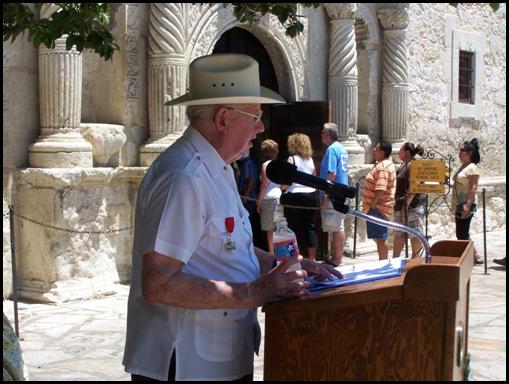
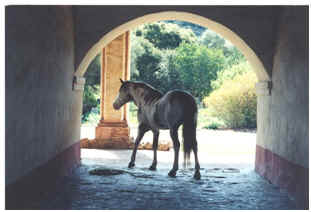
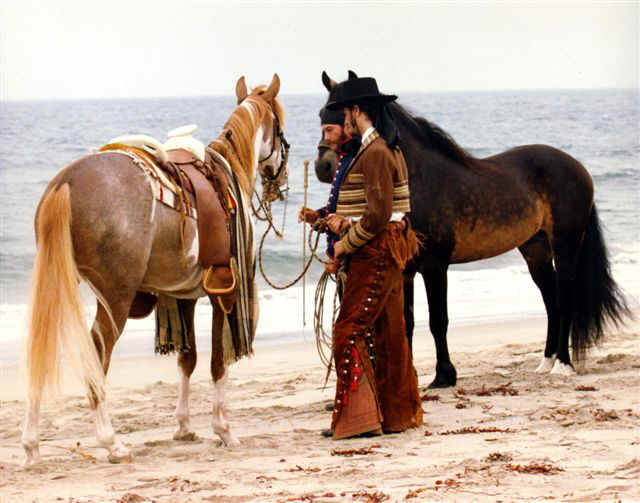

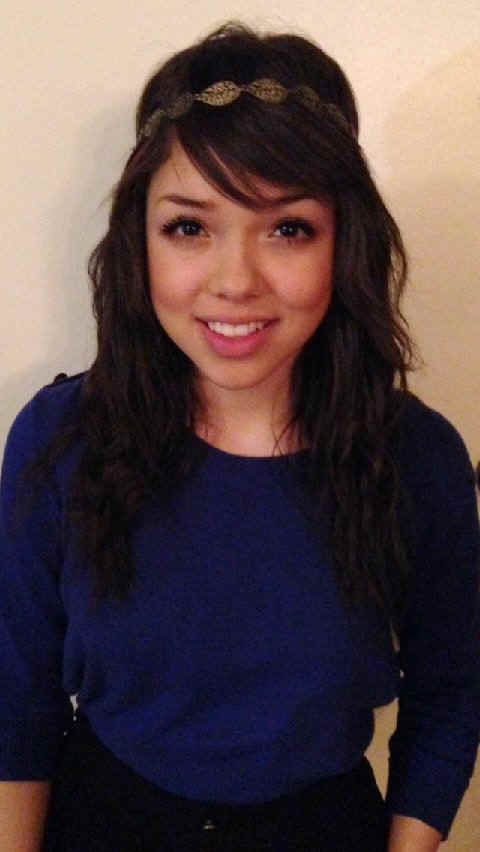
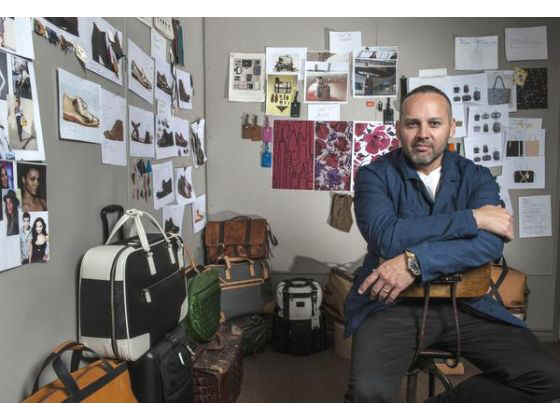
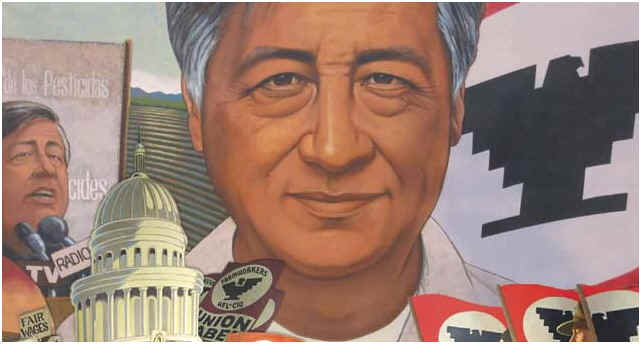
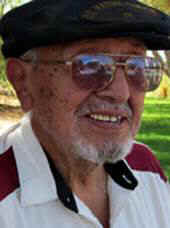
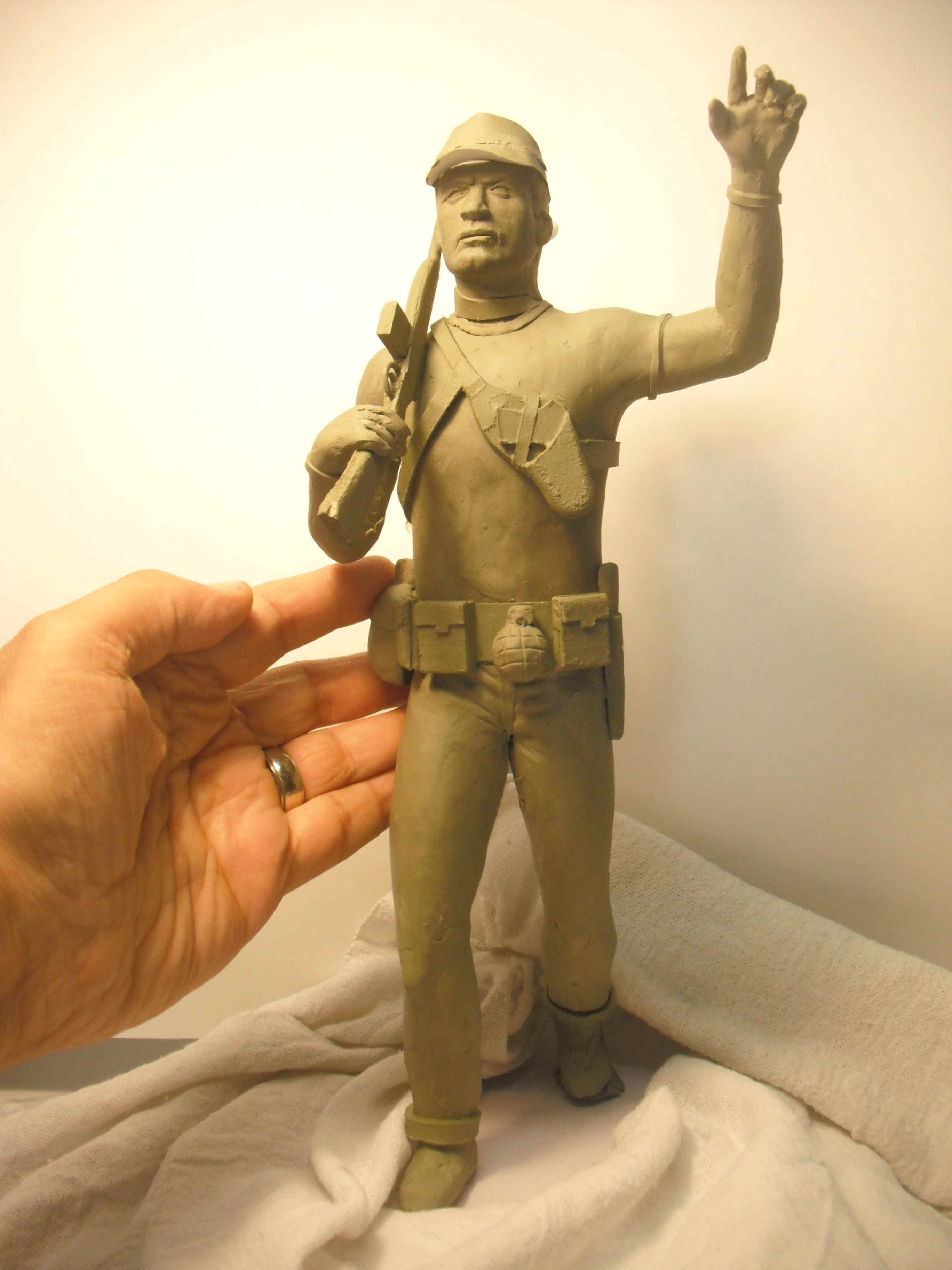
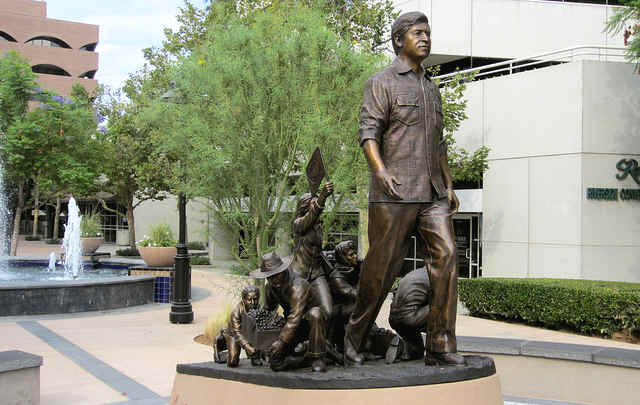
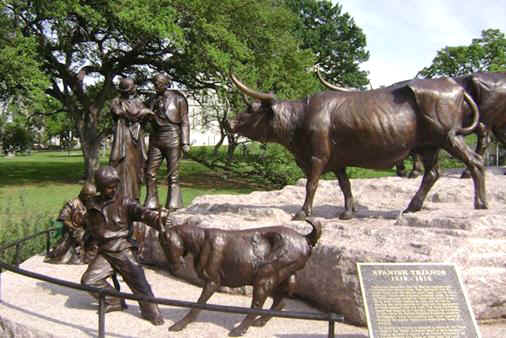
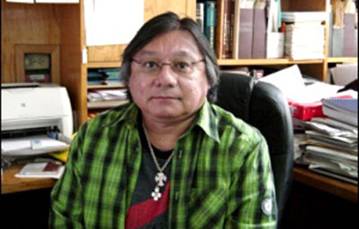
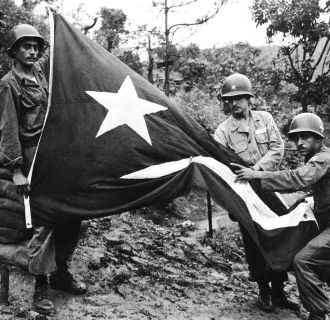
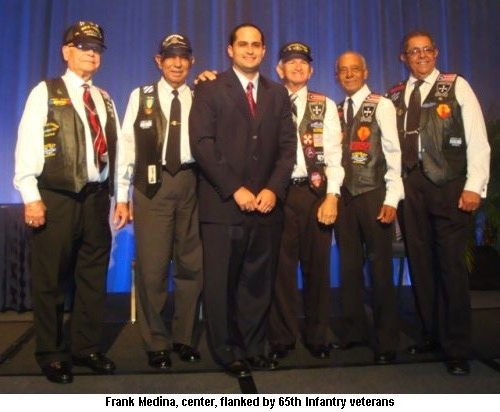


 F
F
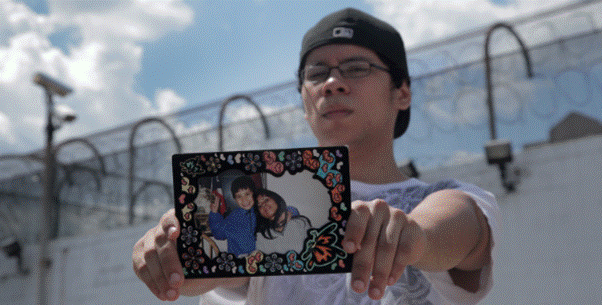
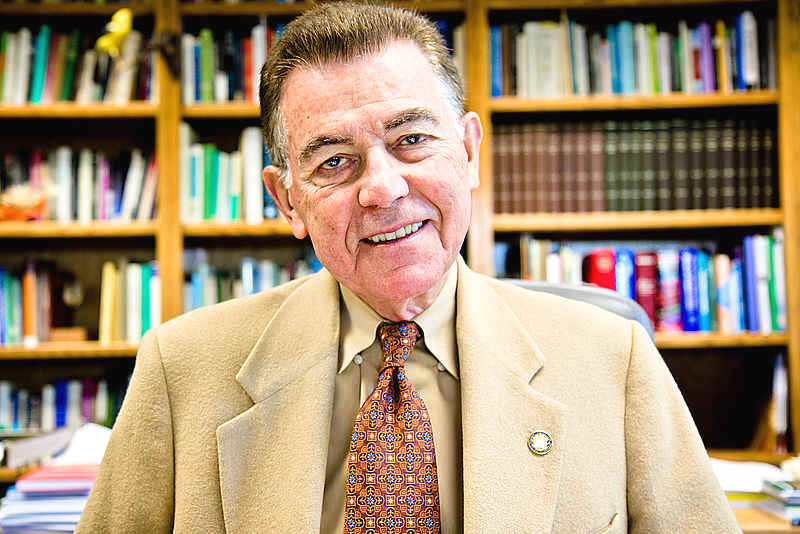





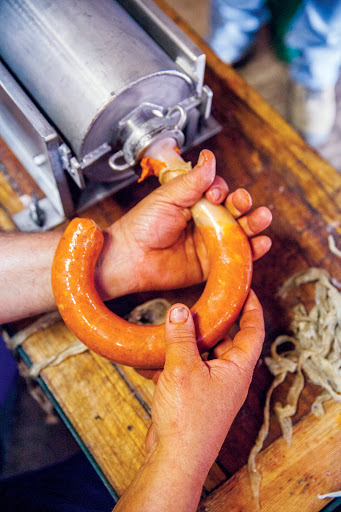
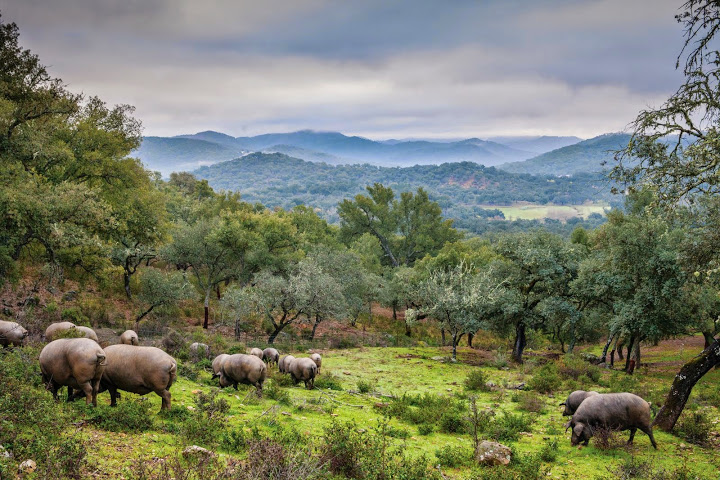
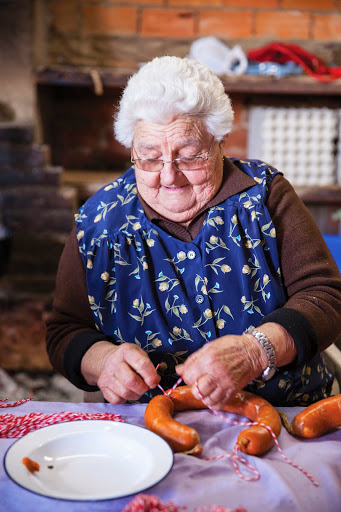

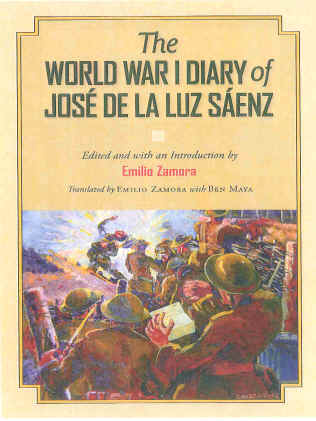
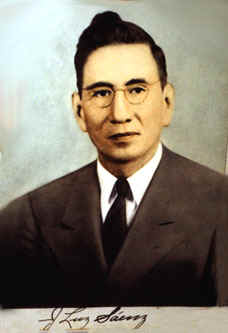
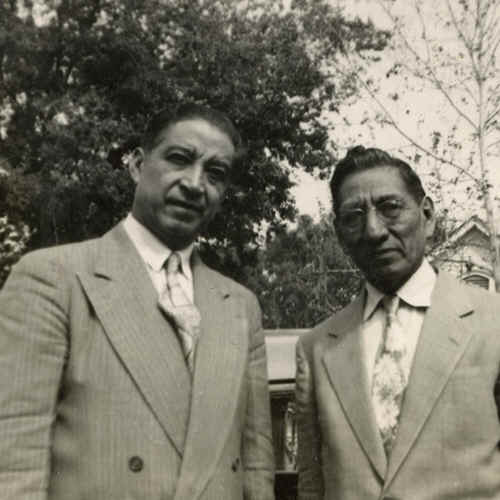
 The
United States celebrates its history through monuments, parks, statues and more
comprehensively through books. The latest book from the
The
United States celebrates its history through monuments, parks, statues and more
comprehensively through books. The latest book from the 
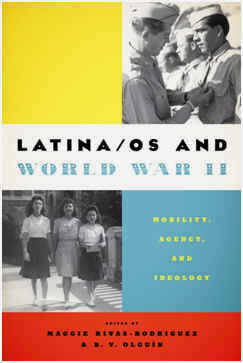
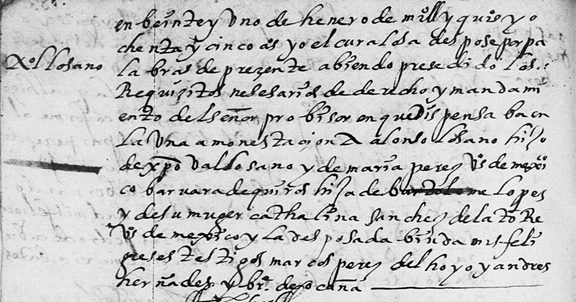
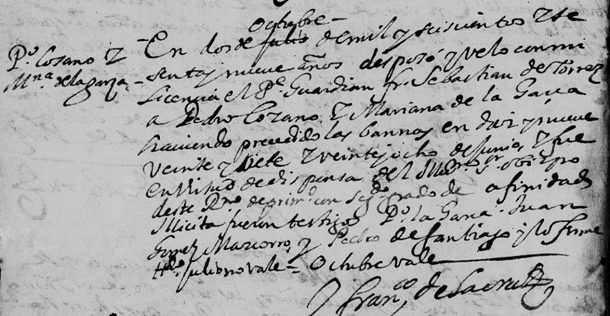

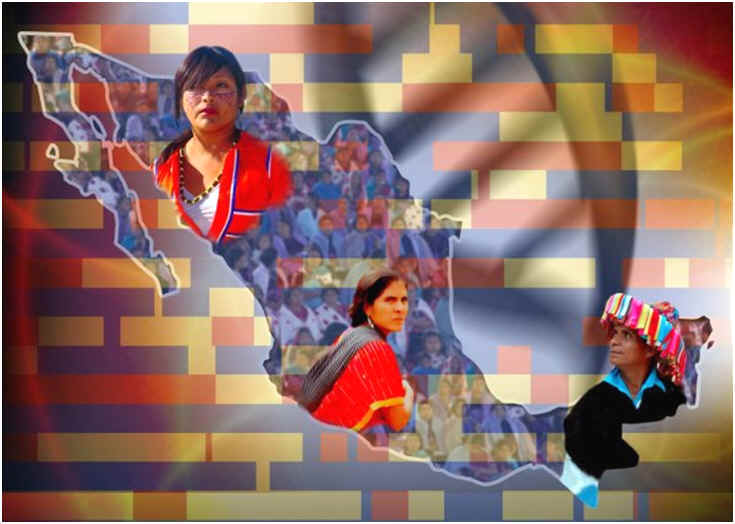


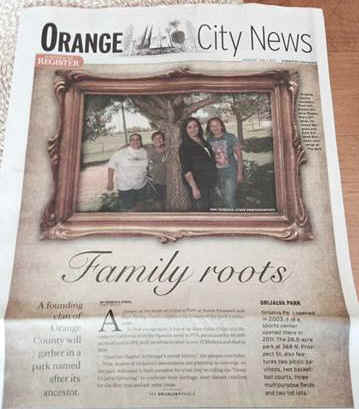
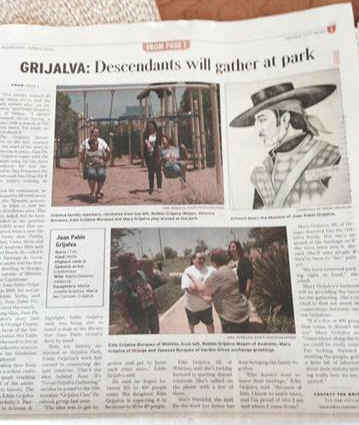
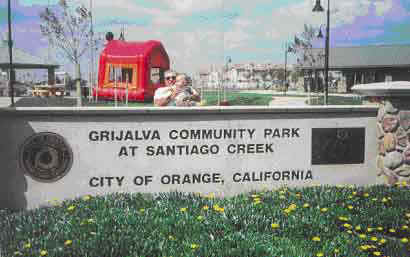



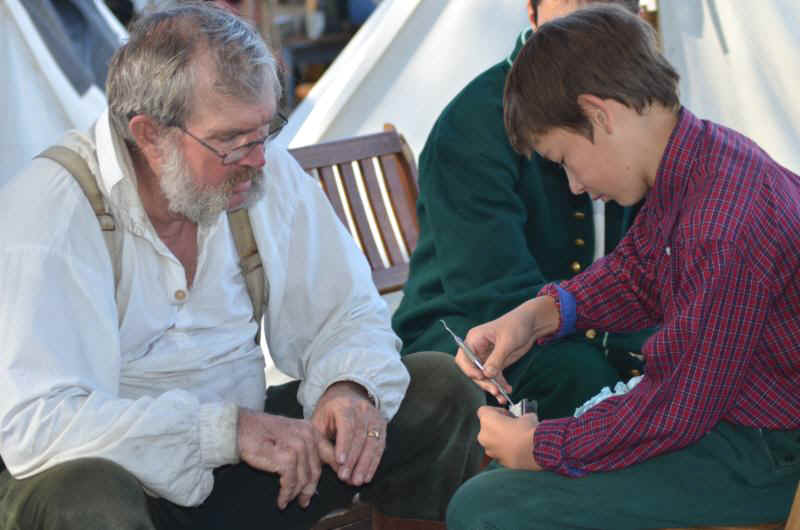 Bring your sunblock & your favorite hat for 2 great
days of learning in the sun!
Bring your sunblock & your favorite hat for 2 great
days of learning in the sun!
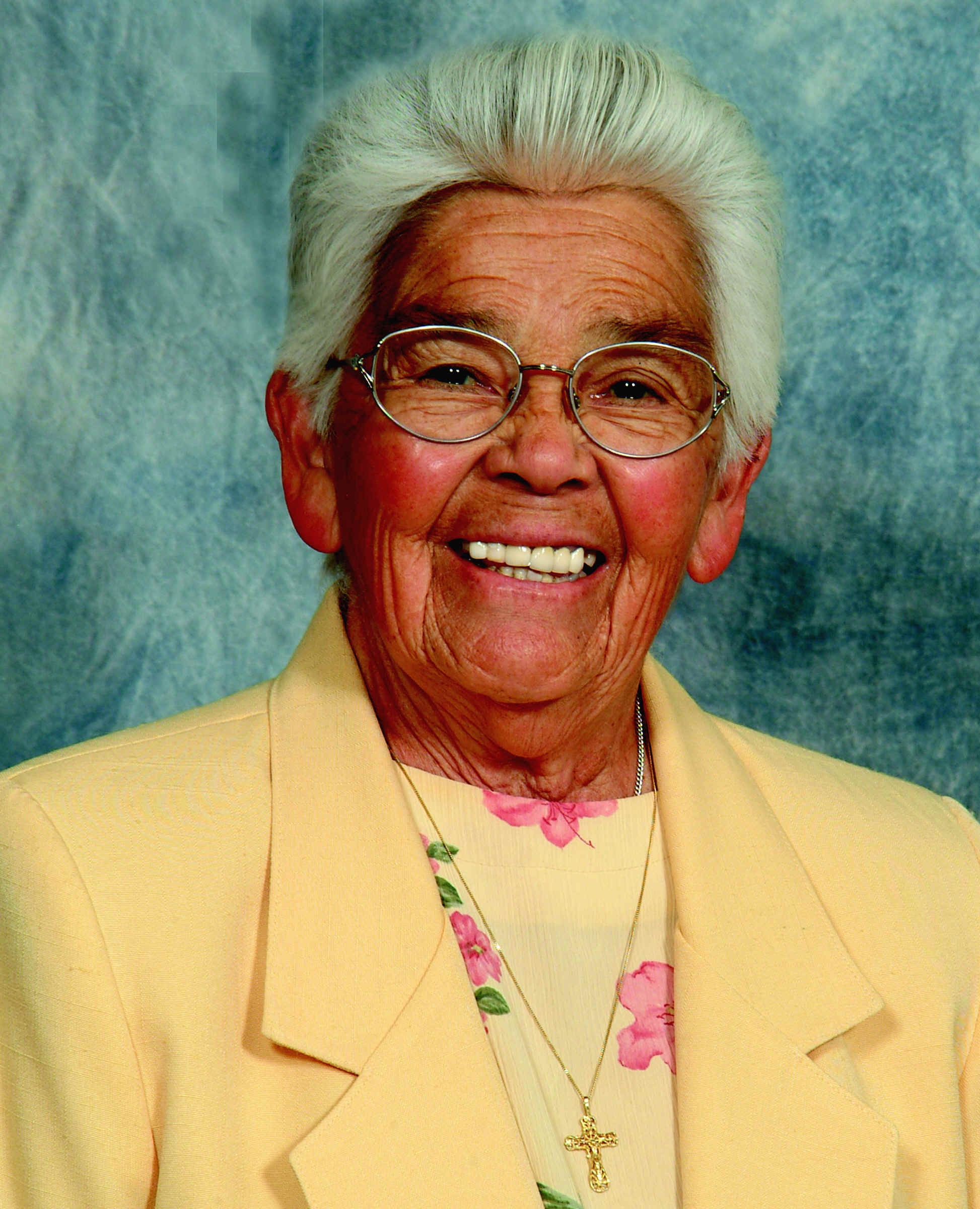


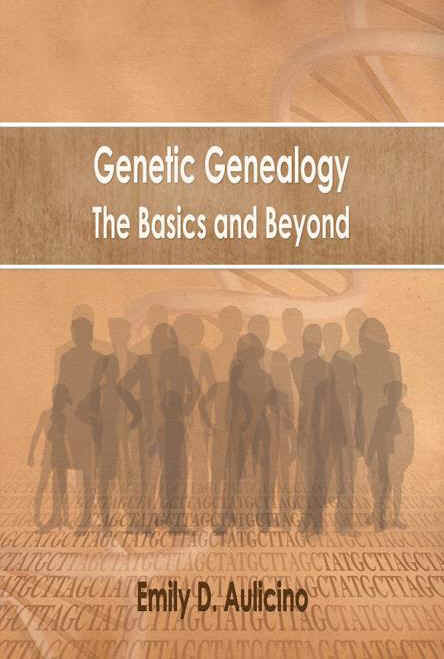

 Steven
Francisco Hernández-López has been seriously working
on his genealogy since 1993 at the age of 19, a family history that is focused
in virtually every pueblo of Los Altos de Jalisco, and it’s nearby regions,
such as Nochistlán, Aguascalientes, Guanajuato and Michoacán. He has consulted
countless LDS microfilms, integrated and enhanced much of the work of Jaime
Holcombe and collaborated with genealogists such as Ophelia Márquez, Tony
Campos, Mary Lou Montagna, Mario González Leal and many other notable figures.
In 2003, Steven Hernández-López edited a compilation of works entitled
"Genealogical Journal, Volume V, 2003" under the auspices of the
Society of Hispanic Historical and Ancestral Research, where he authored,
"Lasting Legacy of Insurgent General Pedro Moreno de Ortega y Gonzalez de
Steven
Francisco Hernández-López has been seriously working
on his genealogy since 1993 at the age of 19, a family history that is focused
in virtually every pueblo of Los Altos de Jalisco, and it’s nearby regions,
such as Nochistlán, Aguascalientes, Guanajuato and Michoacán. He has consulted
countless LDS microfilms, integrated and enhanced much of the work of Jaime
Holcombe and collaborated with genealogists such as Ophelia Márquez, Tony
Campos, Mary Lou Montagna, Mario González Leal and many other notable figures.
In 2003, Steven Hernández-López edited a compilation of works entitled
"Genealogical Journal, Volume V, 2003" under the auspices of the
Society of Hispanic Historical and Ancestral Research, where he authored,
"Lasting Legacy of Insurgent General Pedro Moreno de Ortega y Gonzalez de 
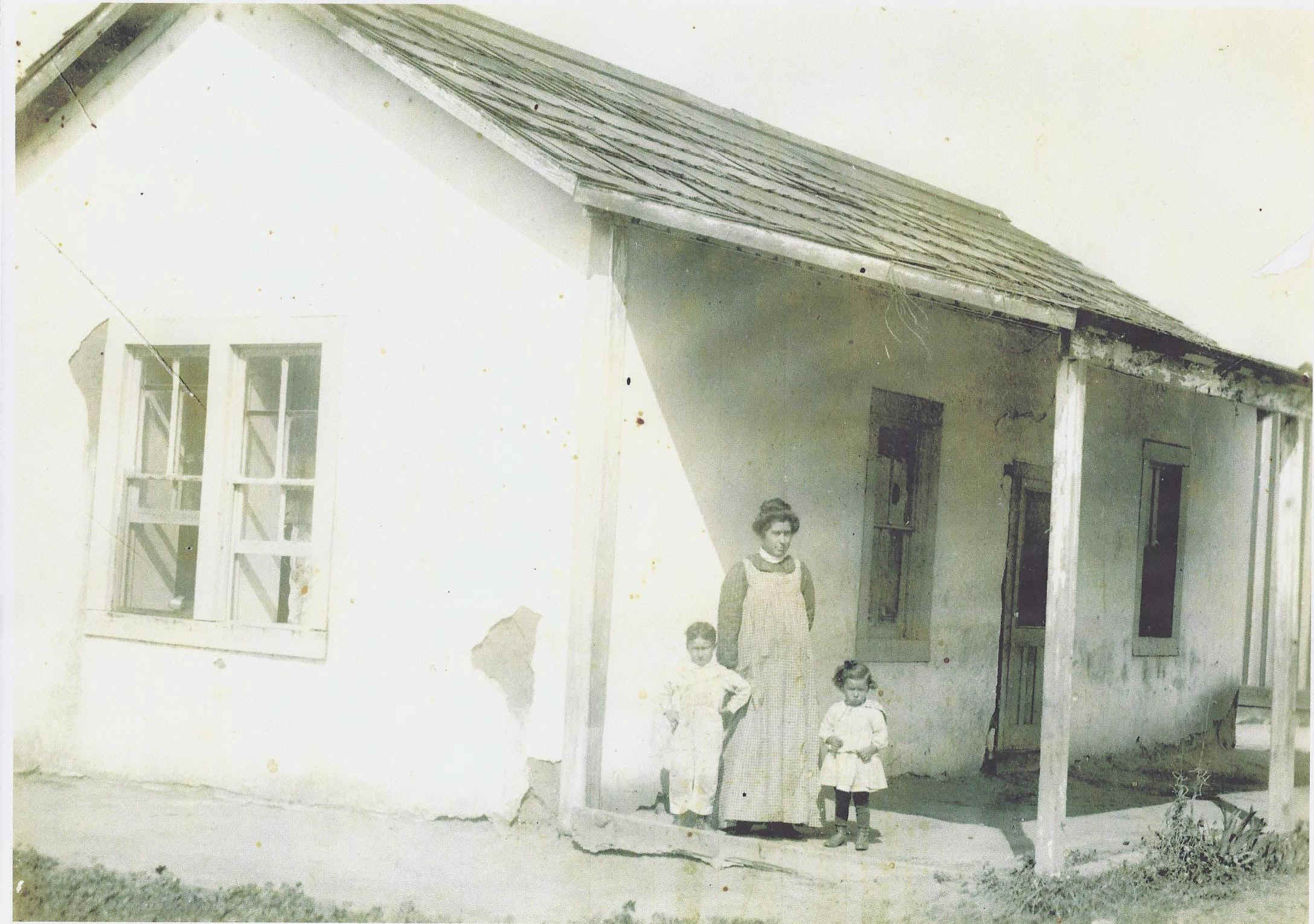
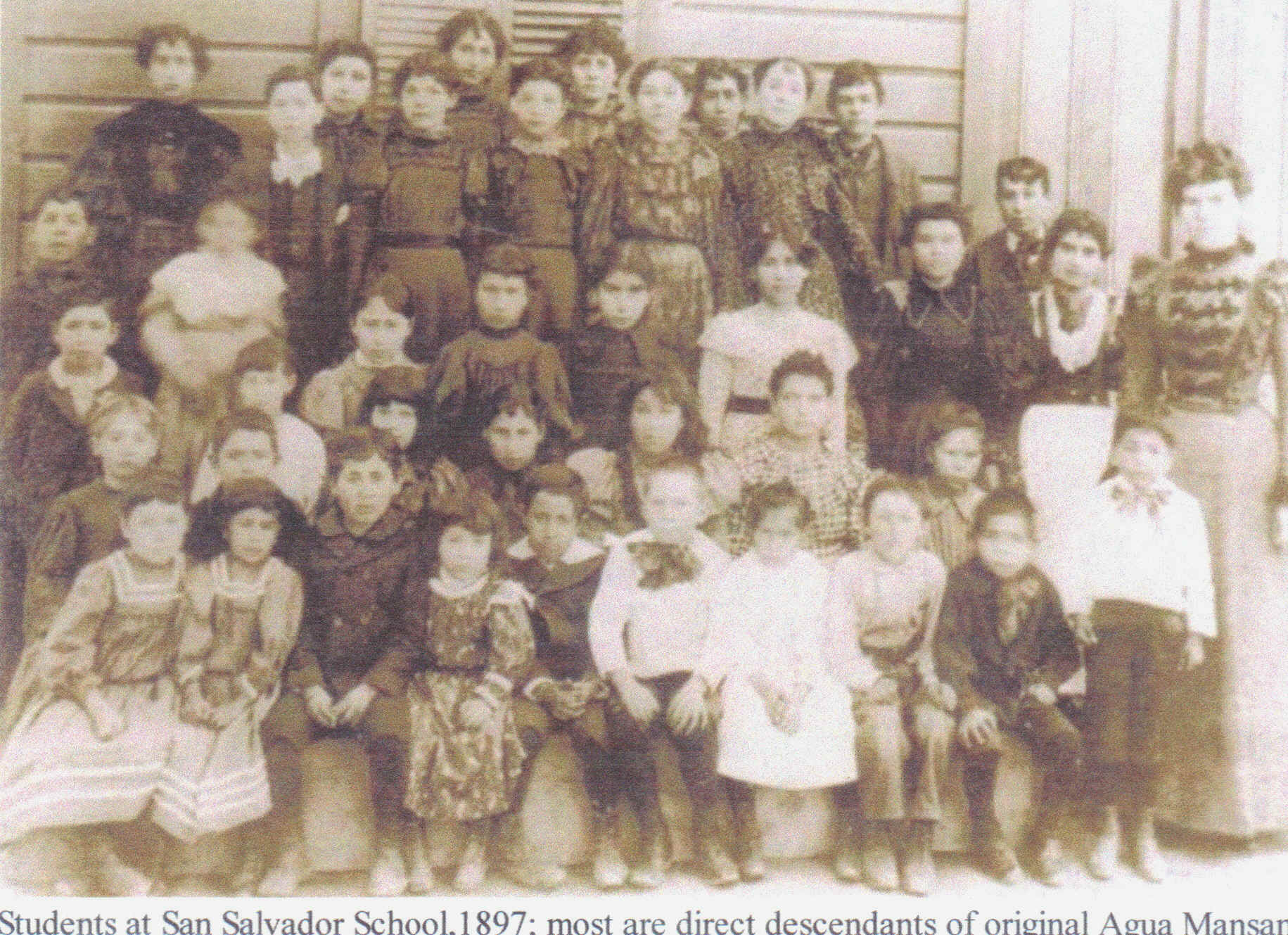
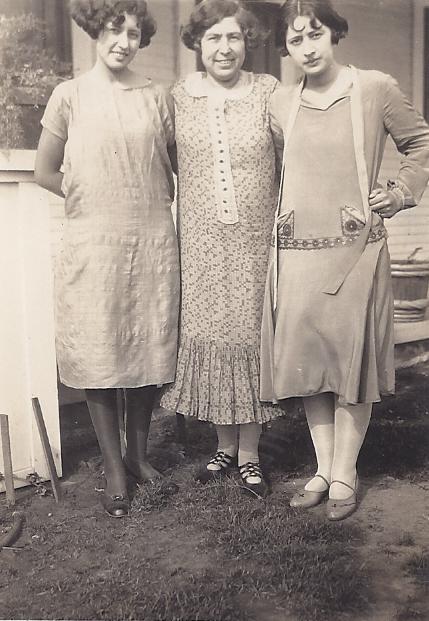
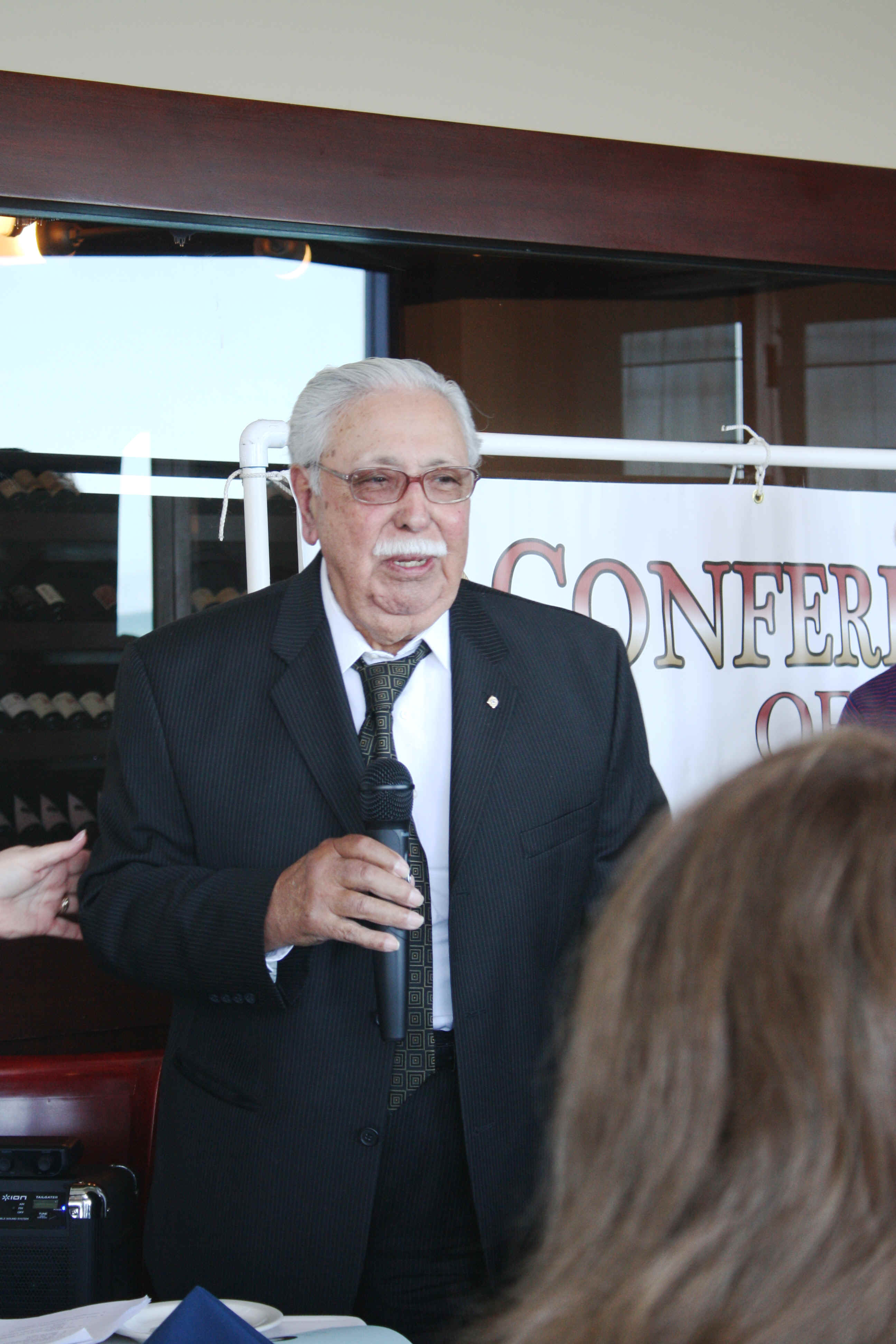
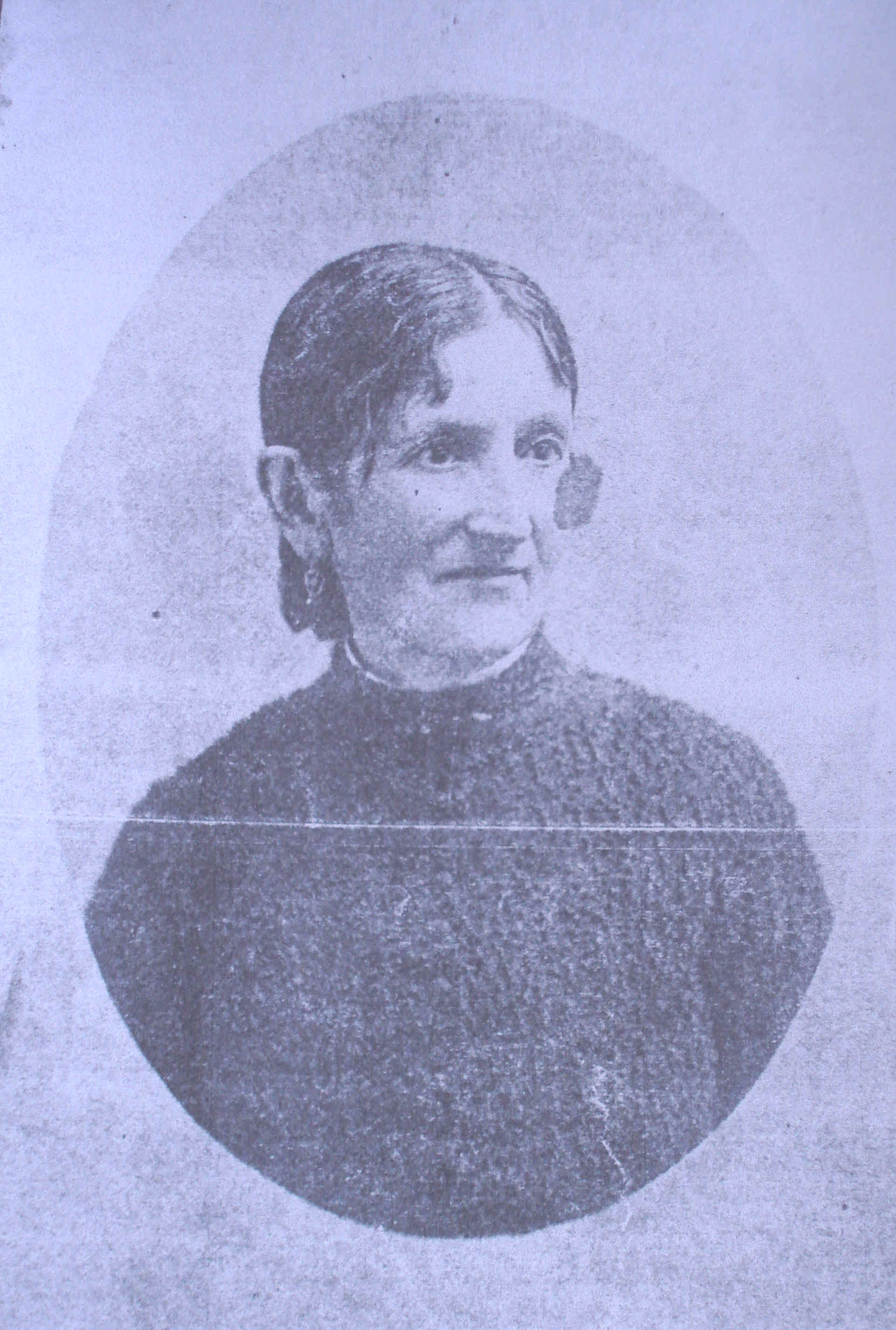
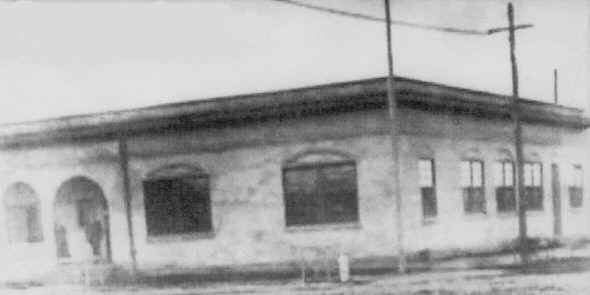
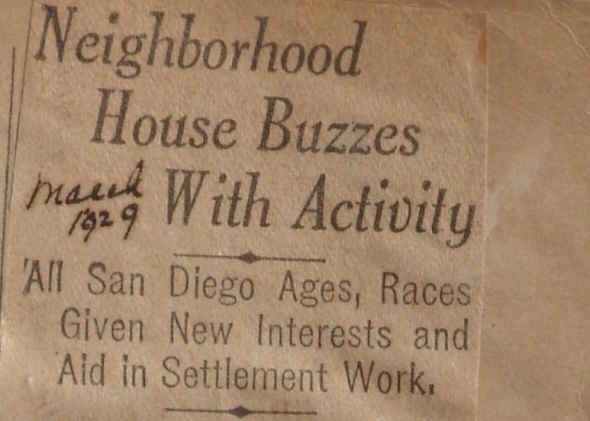
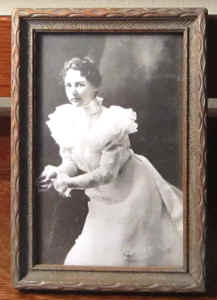 Garden parties were held in the Marston garden year after year with the
proceeds going to fund Neighborhood House. The Marston garden was phenomenal in
its beauty and for the many species of plants, many of which came from the
Canary Islands. When you review news articles of those parties you see pictures
of women dressed in their finest clothes, and men in their walking suits dancing
and walking in the beautiful gardens. In the days before HWY 395/163, music
could be heard
Miss Mary Marston
Garden parties were held in the Marston garden year after year with the
proceeds going to fund Neighborhood House. The Marston garden was phenomenal in
its beauty and for the many species of plants, many of which came from the
Canary Islands. When you review news articles of those parties you see pictures
of women dressed in their finest clothes, and men in their walking suits dancing
and walking in the beautiful gardens. In the days before HWY 395/163, music
could be heard
Miss Mary Marston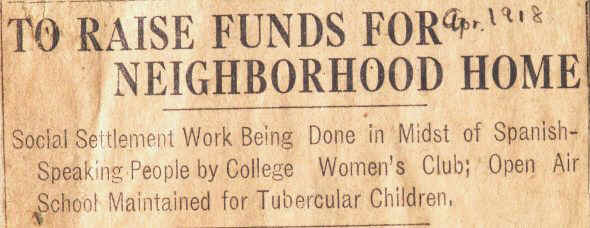
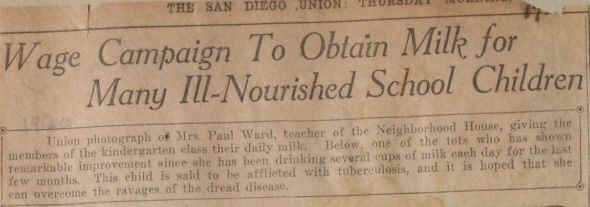
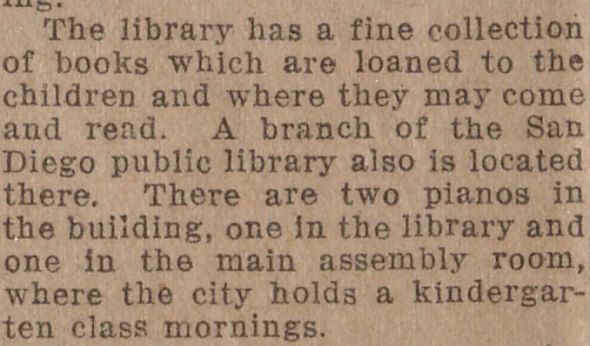
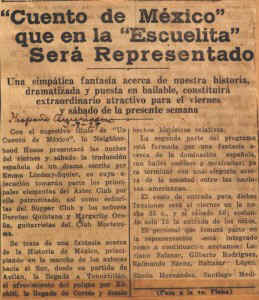 Much
of the entertainment was initially arranged by clubs and church societies for
their own members. There was a recognition that these events would give wider
pleasure if repeated at Neighborhood House. Many of the articles refer to the
Mexican church on Kearny (Our Lady of Guadalupe). The church and the community
along with Neighborhood House all worked to benefit the community. It was not
unusual for a group to perform at the church, at Neighborhood House and at one
of the Marston garden parties.
Much
of the entertainment was initially arranged by clubs and church societies for
their own members. There was a recognition that these events would give wider
pleasure if repeated at Neighborhood House. Many of the articles refer to the
Mexican church on Kearny (Our Lady of Guadalupe). The church and the community
along with Neighborhood House all worked to benefit the community. It was not
unusual for a group to perform at the church, at Neighborhood House and at one
of the Marston garden parties.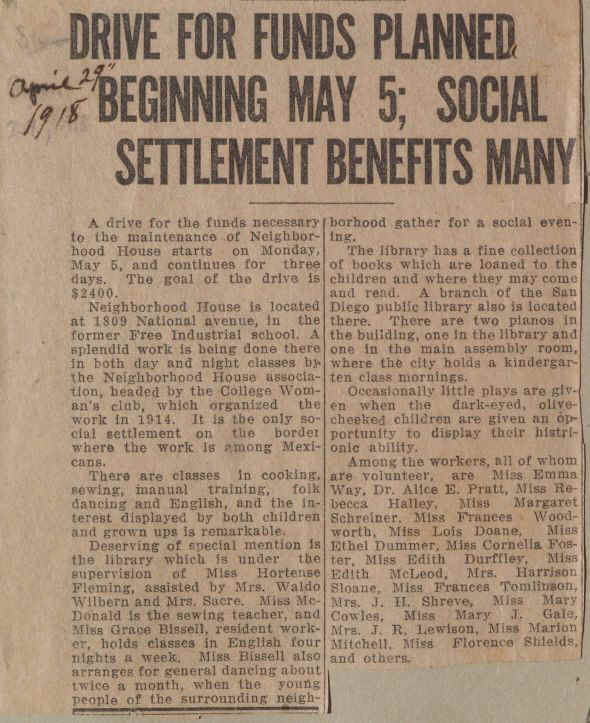



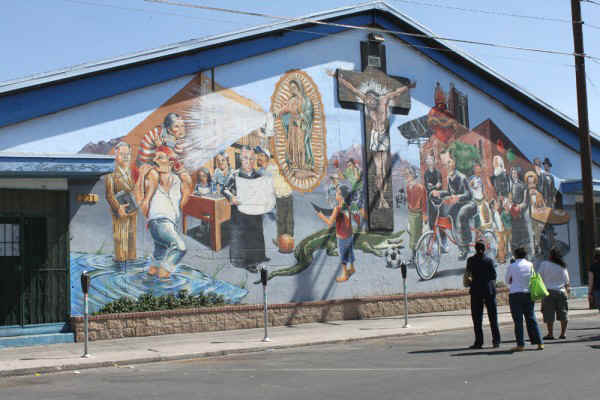
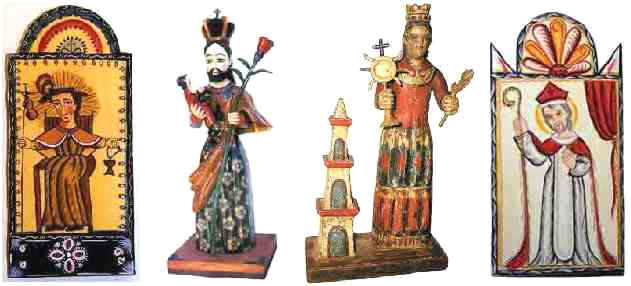
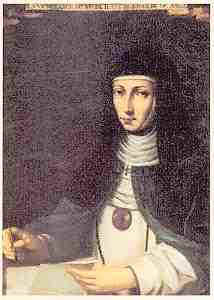
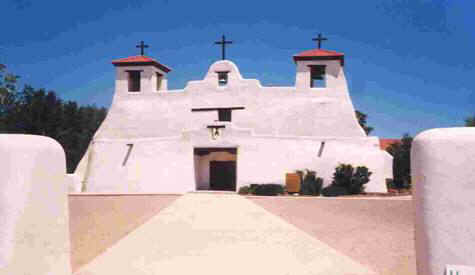
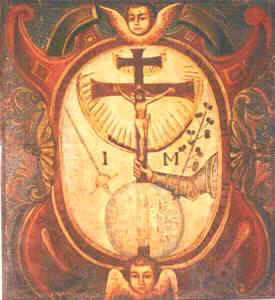
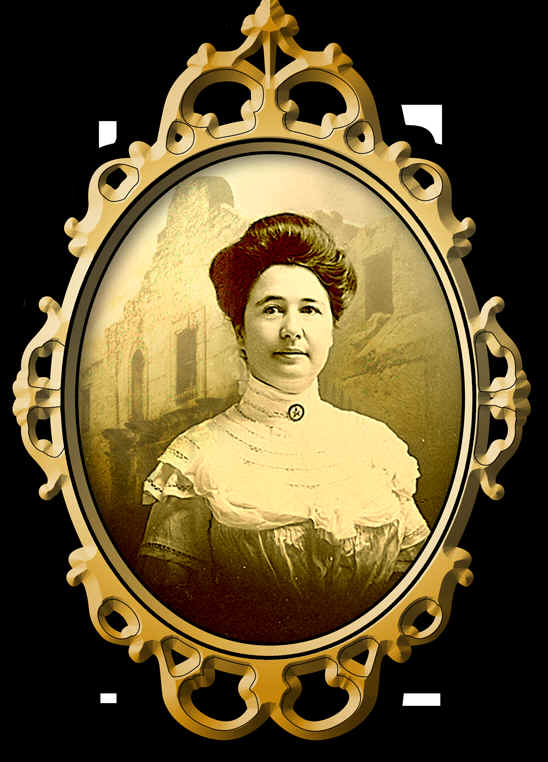

.jpg)
